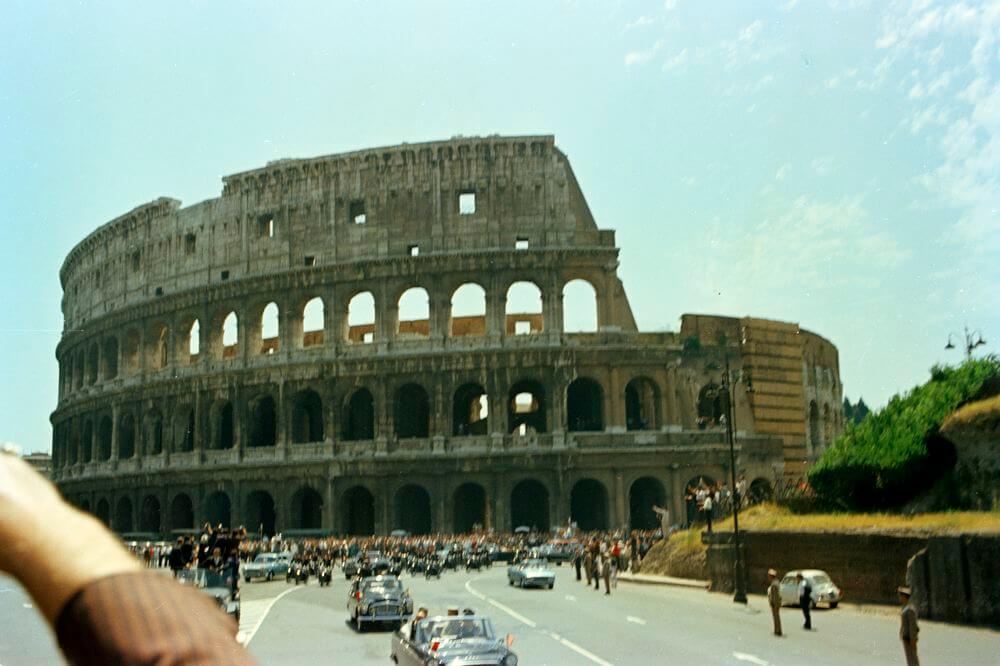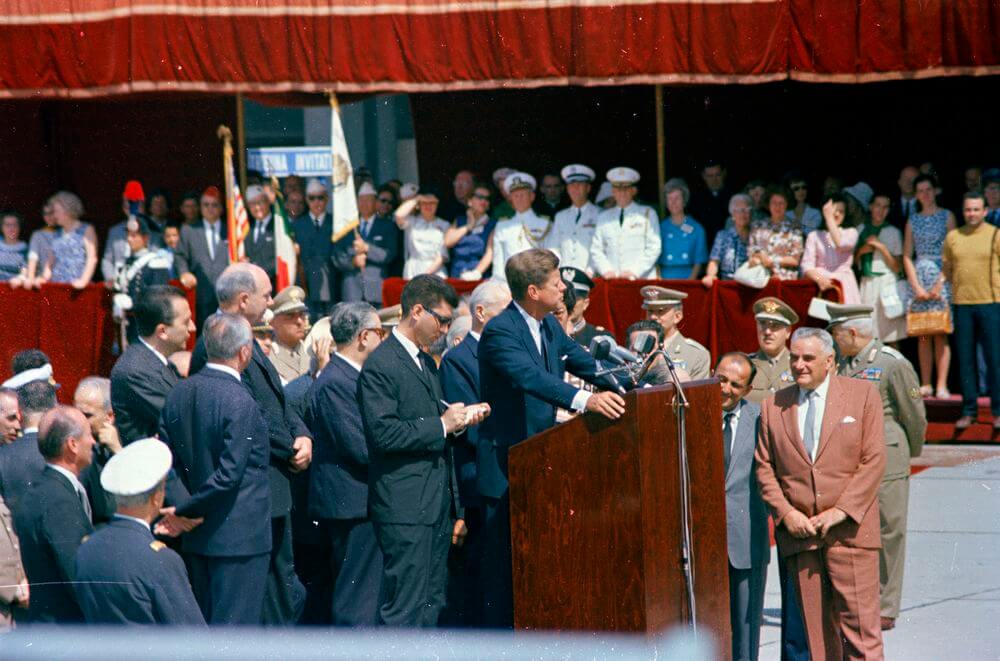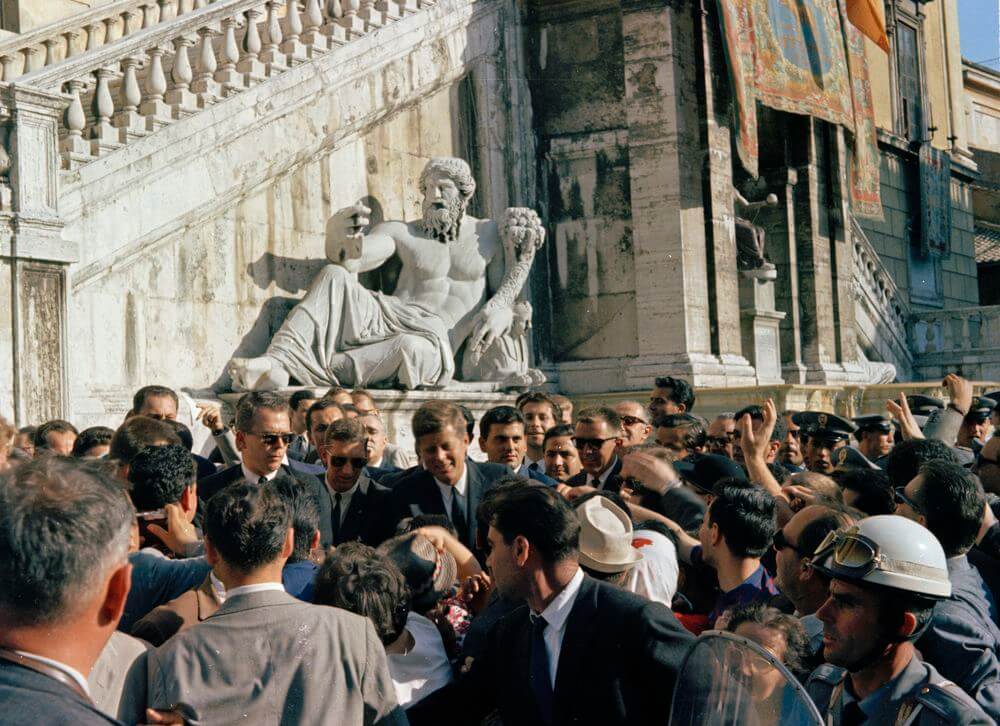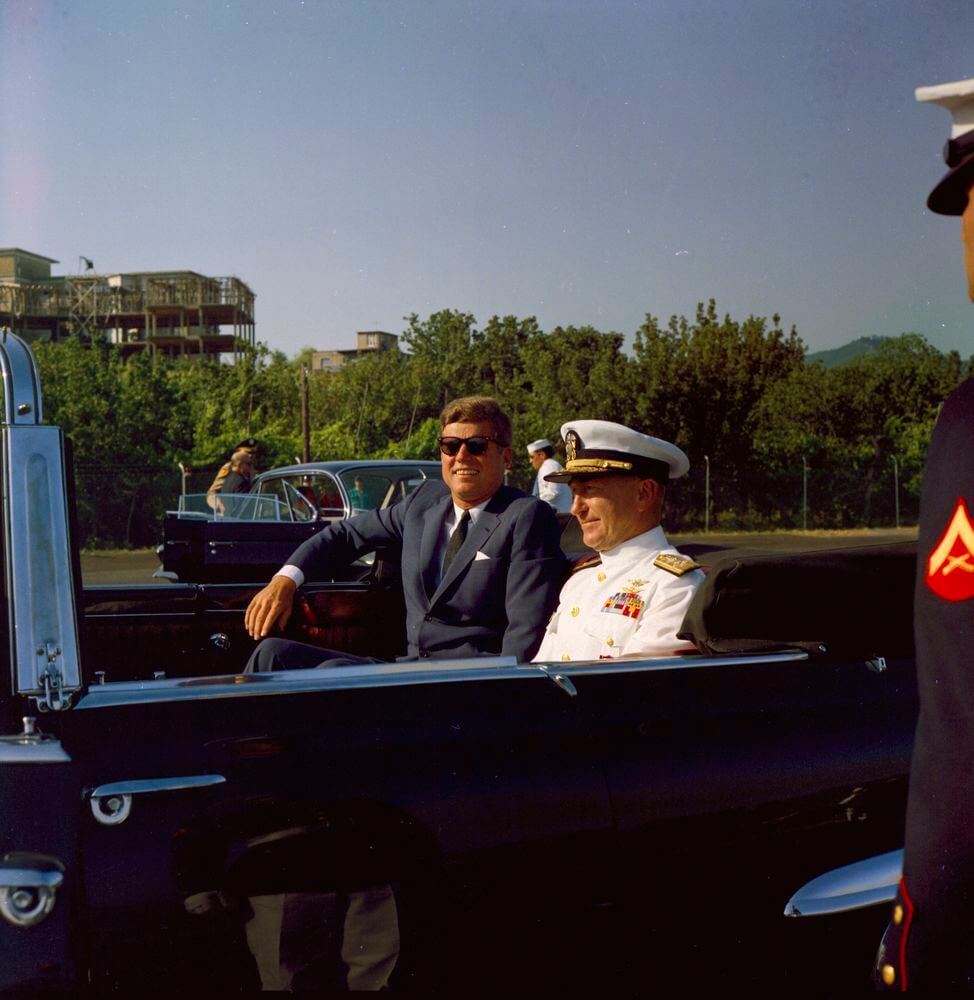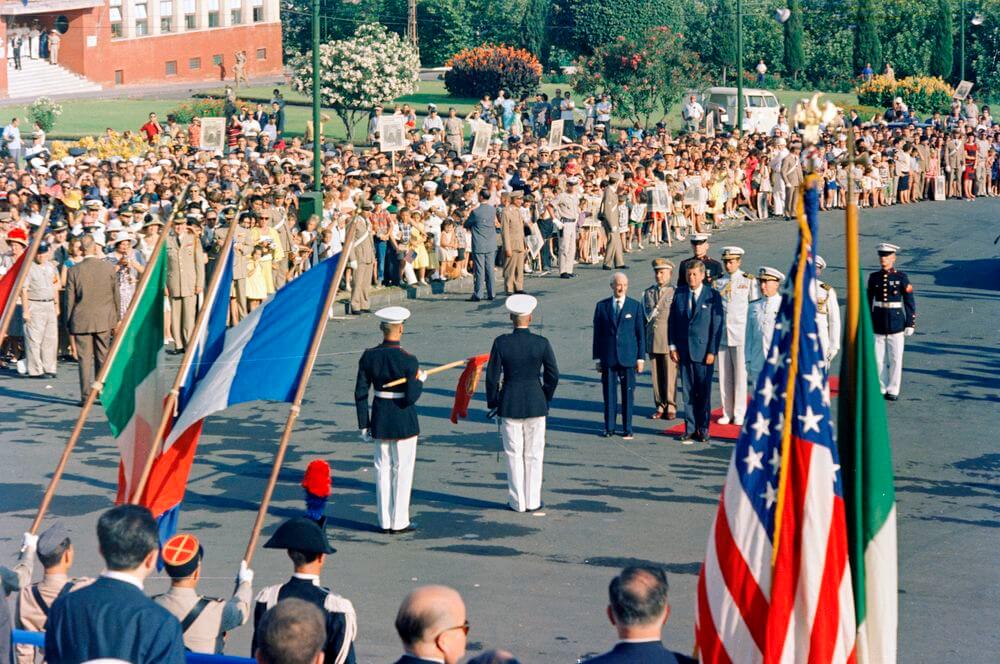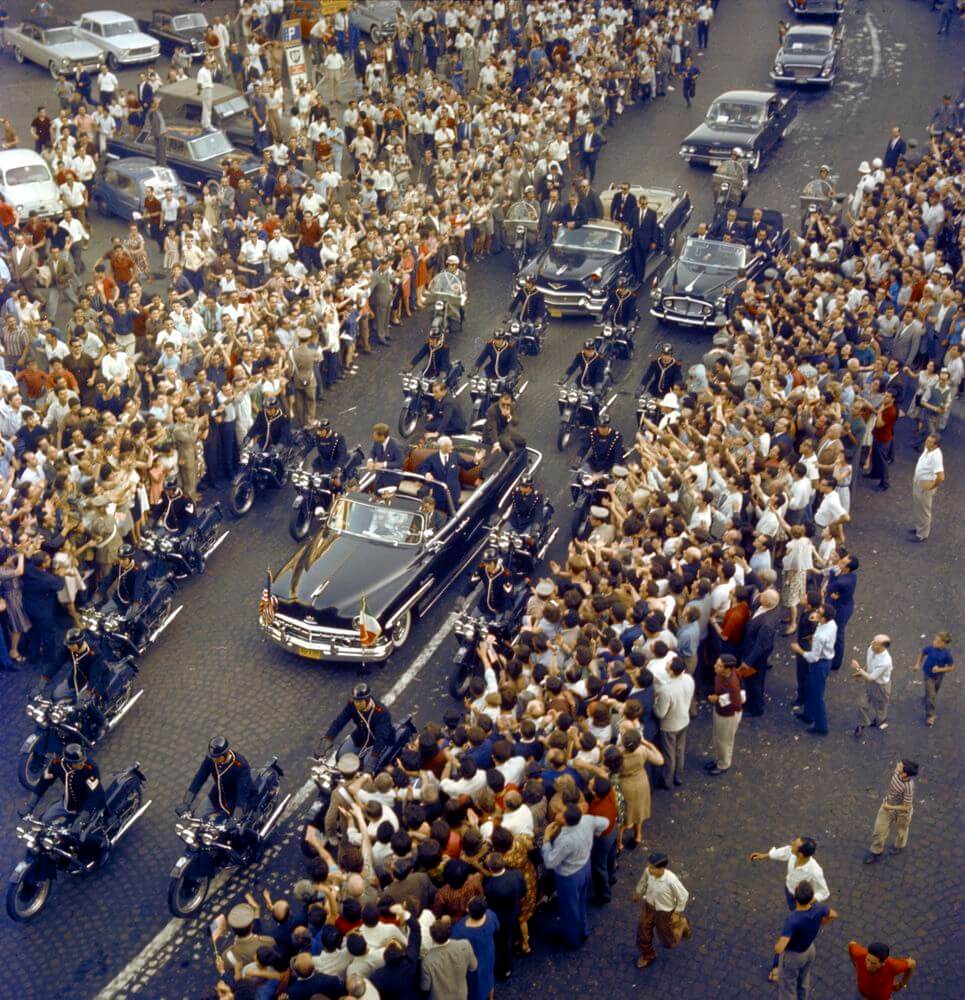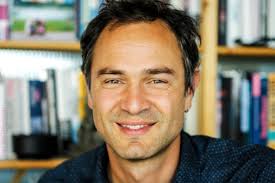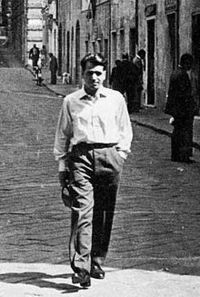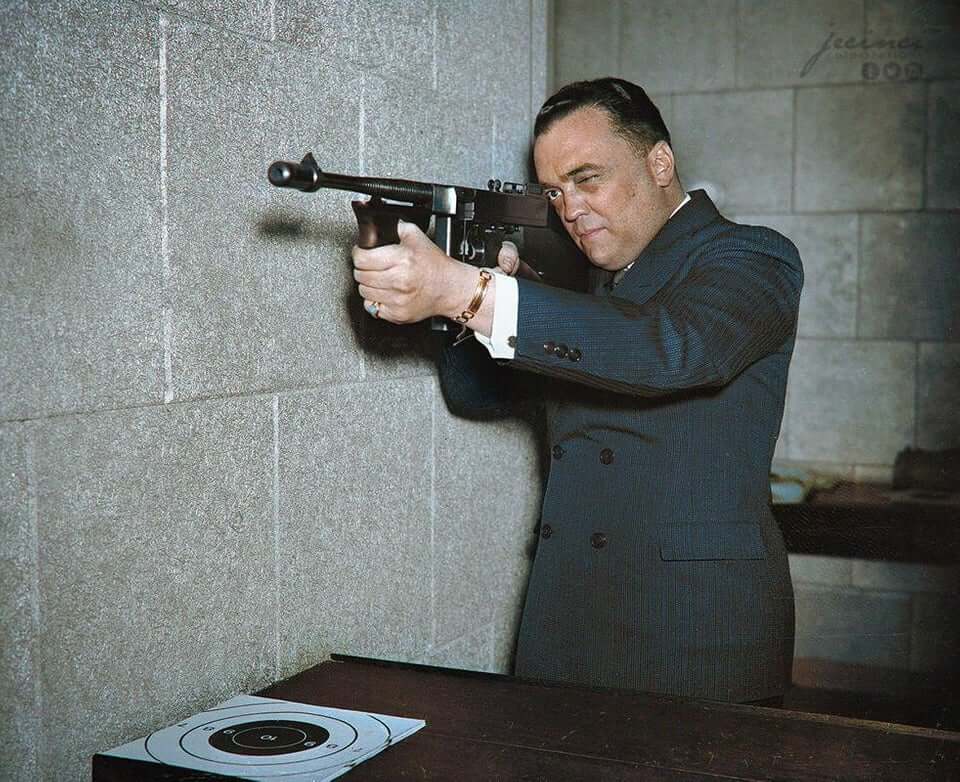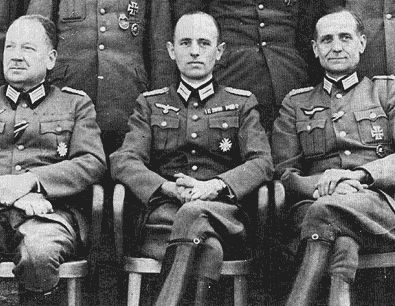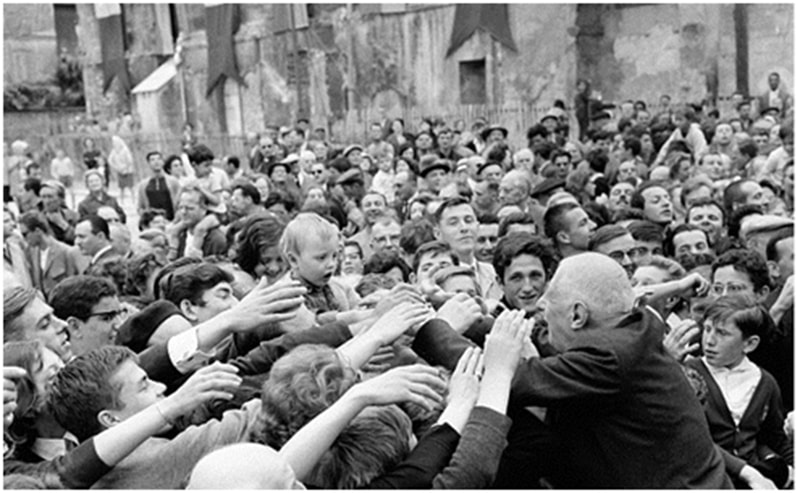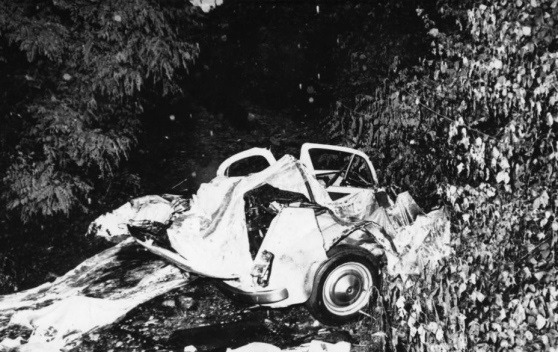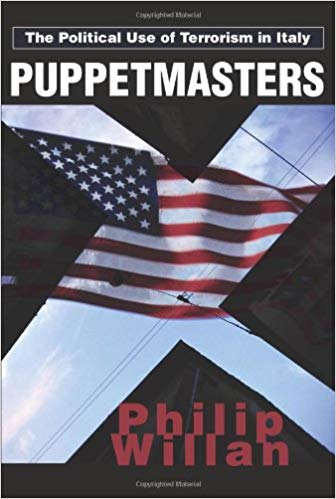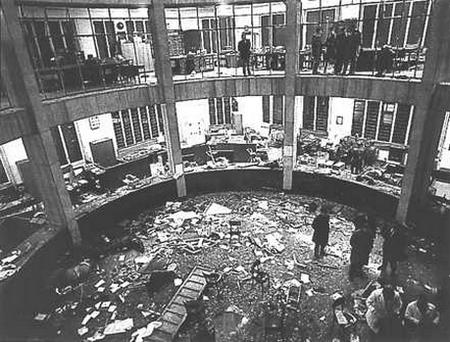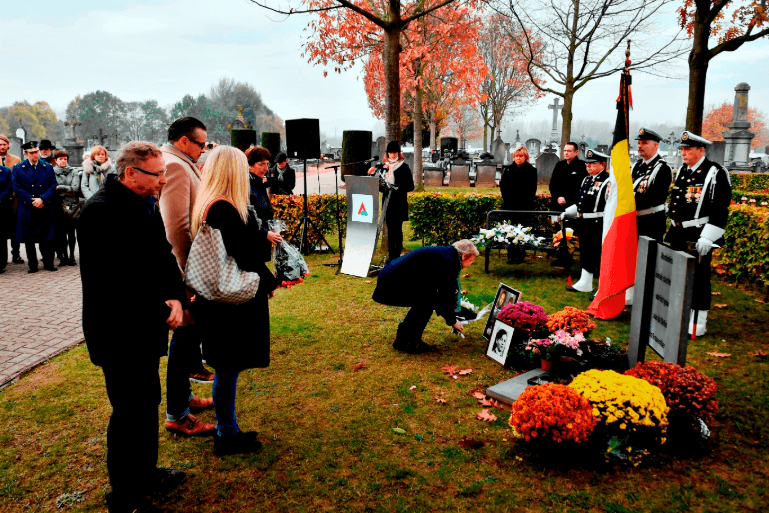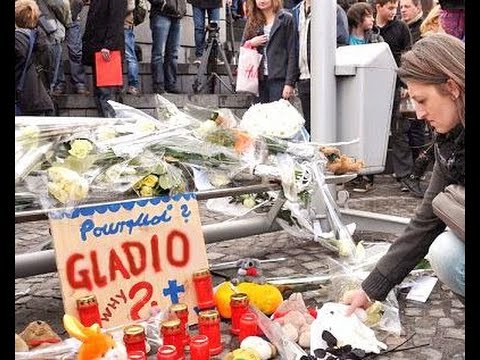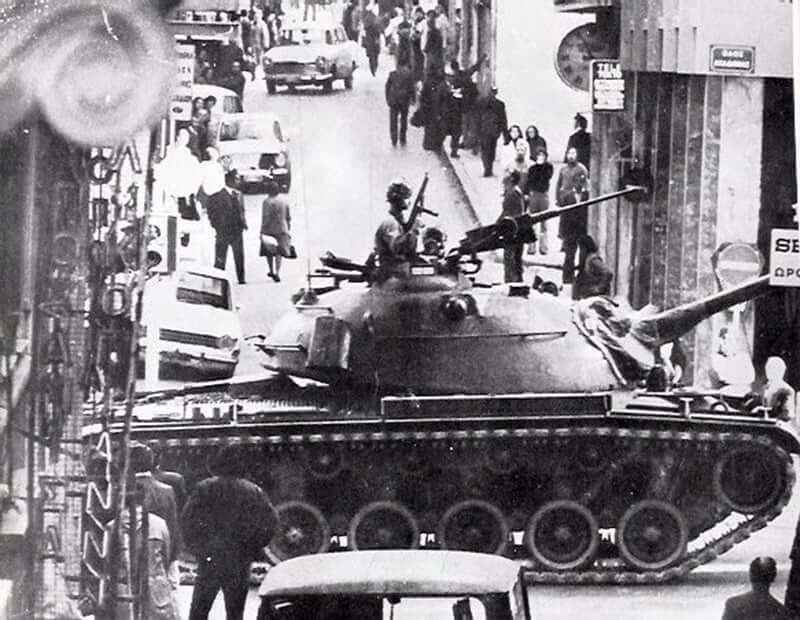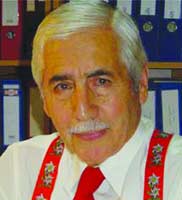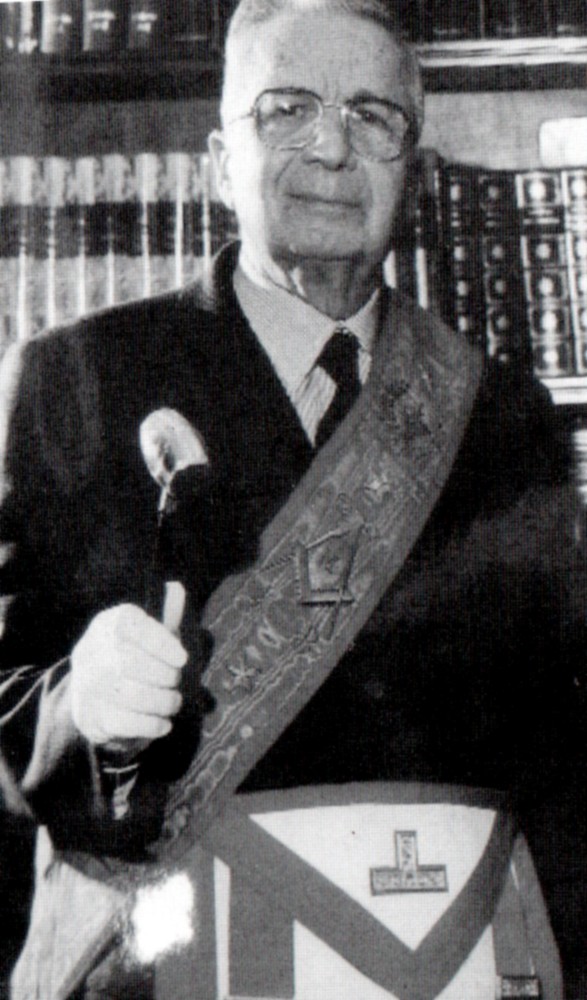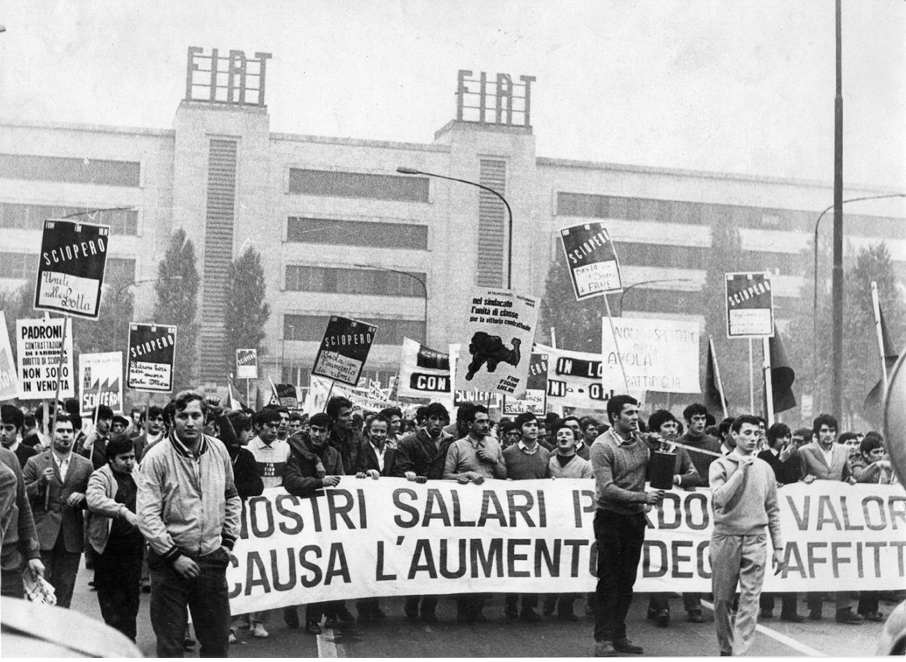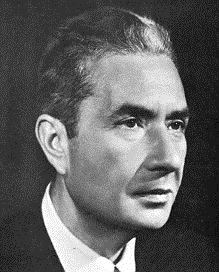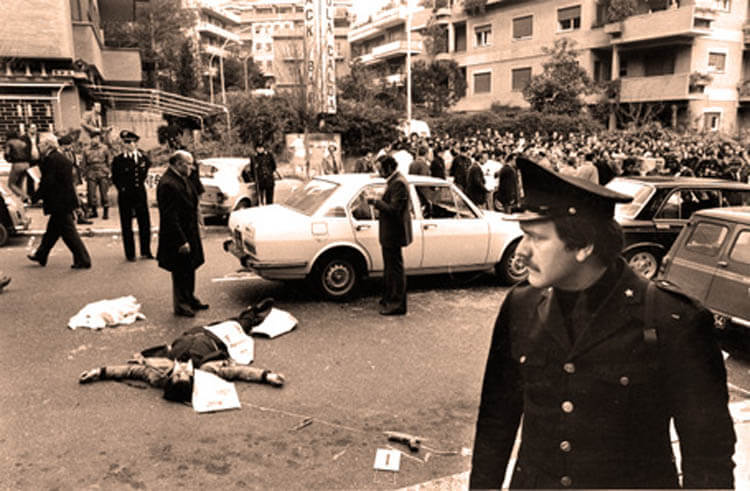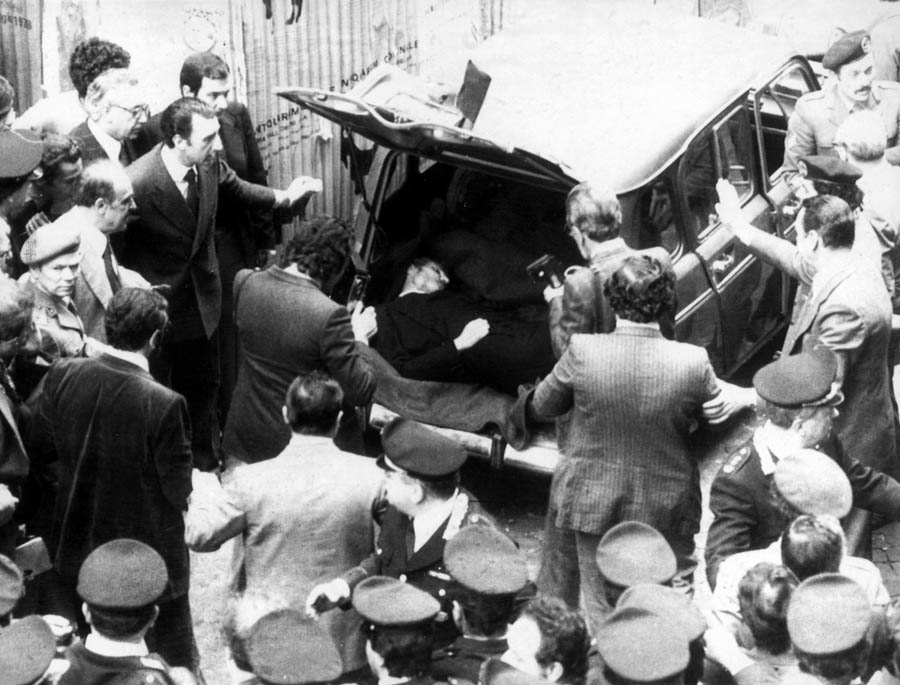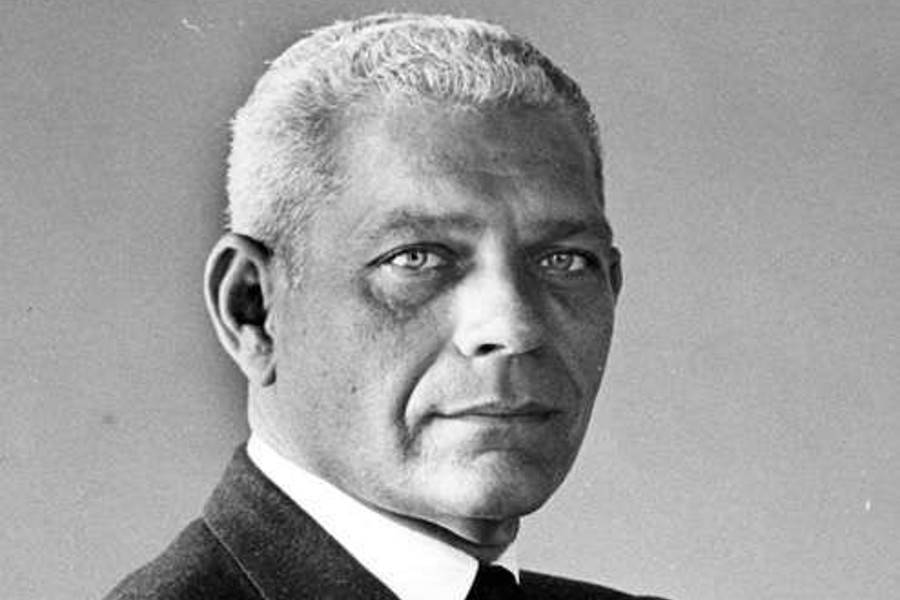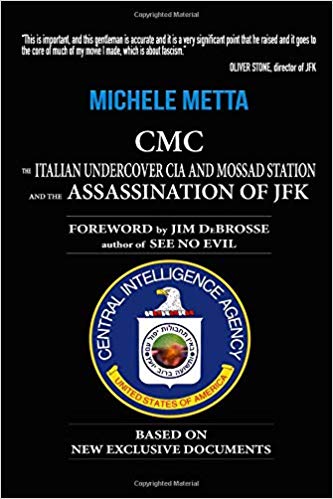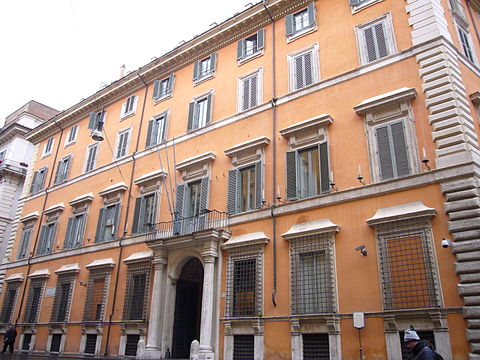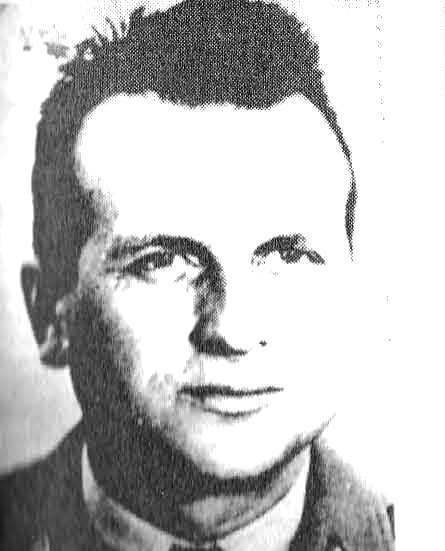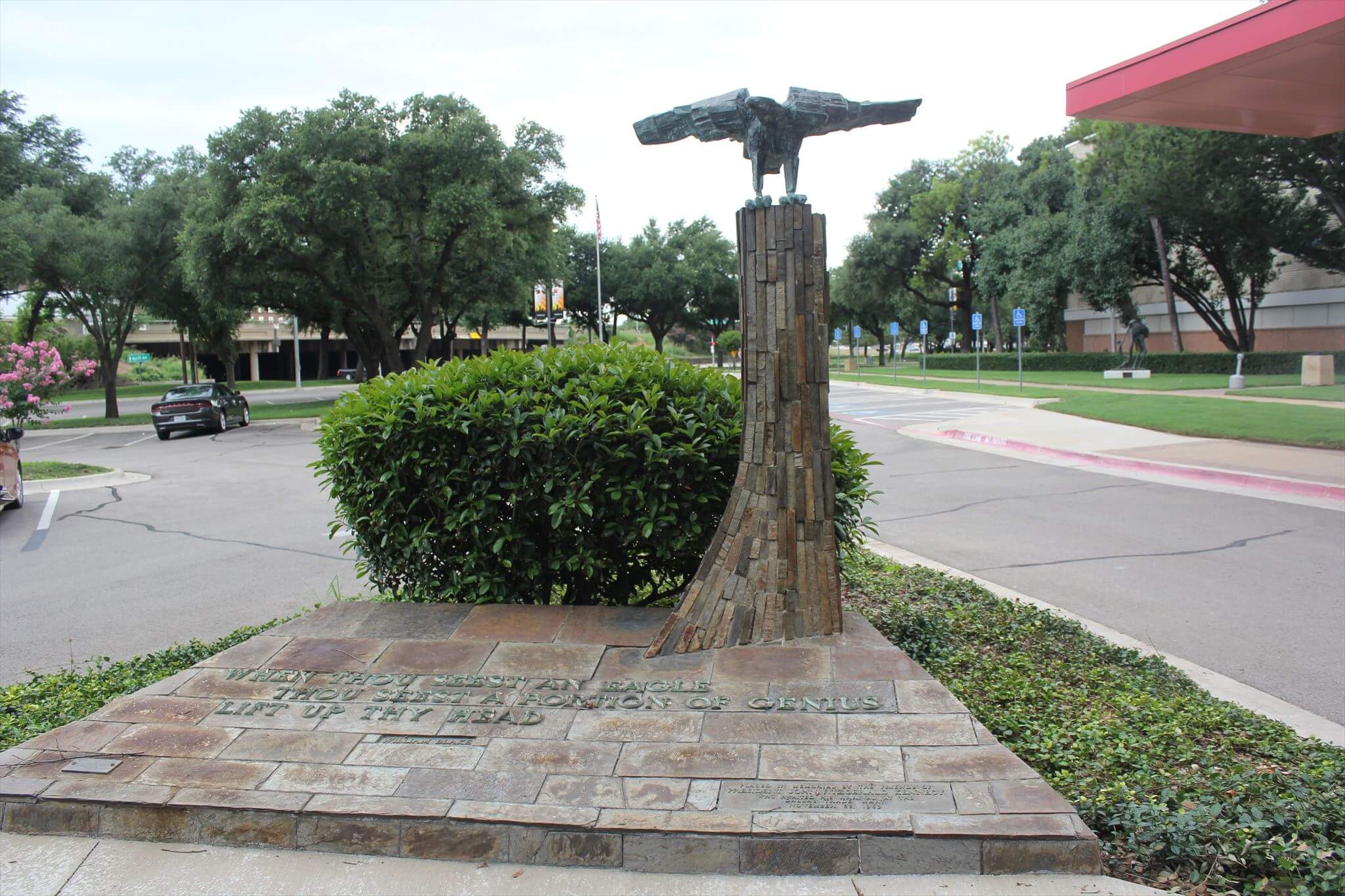The very word “secrecy” is repugnant in a free and open society; and we are as a people inherently and historically opposed to secret societies, to secret oaths, and to secret proceedings. We decided long ago that the dangers of excessive and unwarranted concealment of pertinent facts far outweighed the dangers which are cited to justify it. Even today, there is little value in opposing the threat of a closed society by imitating its arbitrary restrictions. Even today, there is little value in insuring the survival of our nation if our traditions do not survive with it. And there is very grave danger that an announced need for increased security will be seized upon by those anxious to expand its meaning to the very limits of official censorship and concealment. That I do not intend to permit to the extent that it is in my control.
– John F. Kennedy, addressing the American Newspapers Publishers Association, April 27, 1961
I. JFK in Italy
On 1 July 1963, less than five months before his assassination, John F. Kennedy was escorted by motorcade through Rome, passing a large crowd gathered beside the Roman Coliseum, where gladiatorial contests were once held. The Latin-based gladiator is rooted to the Celtic term gladius, or sword. In Italy, the gladio of the ancient warriors was characterized by a short double-edged blade.
JFK motorcade passing the Colosseum
That evening, Kennedy was the special guest at a banquet held in the Quirinale Palace and arranged by the Italian president, Antonio Segni. One of the dignitaries Kennedy was due to confer with was Pietro Nenni, head of Italy’s Socialist Party (PSI). Nenni’s greatest hope was that JFK would lend his support to the “opening to the left” (l’apertura a sinistra): a plan frowned upon by the Eisenhower administration, which would create a left-of-center coalition between the Socialists and Italy’s ruling party, the Christian Democrats. Nenni was not disappointed. Deeply moved by their intense conversation, he left the meeting with tears of joy in his eyes. Shortly afterward, Kennedy would give his official approval to l’apertura and ask labor leader Victor Reuther and his brother Walter, president of the United Auto Workers, to help generate financial aid to the Socialists.
President Kennedy at the Quirinale Palace
Upon his return from Europe, the president remarked to his special assistant Arthur Schlesinger (the man who had initially convinced Kennedy to support l’apertura): “So far as I could see, everyone in Italy is for an opening to the left.” For any scholar familiar with the history of Operation Gladio, such a remark could mean only one of two things. Either Kennedy was playing his cards very close to his vest with a man who had already earned his trust and confidence, or he was completely uninformed on the subject of Italy’s postwar clandestine “stay-behind” guerrilla army: a virulently anticommunist, antisocialist, and one might even say antidemocratic organization, code-named Gladio.
As the Swiss historian Dr. Daniele Ganser explains in his book about NATO’s secret armies,
When John F Kennedy became president in January 1961 the policy of the United States toward Italy changed because Kennedy, unlike his predecessors Truman and Eisenhower, sympathized with the PSI [Italian Socialist Party]. He agreed with a CIA analysis that in Italy “the strength of the socialists, even without aid from outside, means that left-wing sentiment looked forward to a democratic form of socialism.” Yet Kennedy’s plans for reform met with stiff resistance from both the U.S. State Department and the CIA.1
JFK at City Hall in Rome
Indeed, there were shadowy forces back in Washington that remained hell-bent on thwarting the president’s goals and whose actual alliance was to a power elite that transcended the agenda of any mere president. At this historical moment, the covert “powers that be” were, in part, represented by some rather sinister overt figures who also liked to linger in those shadows, as “spooks” are wont to do.
One was James Angleton, the CIA’s chief of Counterintelligence, who played a singular role in rescuing and recruiting some of the more bestial Fascists who were later to serve in Operation Gladio, such as Prince Junio Valerio Borghese (aka “The Black Prince”), commander of an anti-partisan campaign that murdered hundreds of Italian communists who had fought against Mussolini. Prince Borghese, “in close collaboration with the CIA in Rome on the night of December 7, 1970 started the second right-wing Gladio coup d’état in Italy, code-named Tora Tora”2 (now known as the Borghese coup). As historian Stuart Christie notes, “Angleton became the key American figure controlling all right wing and neofascist political and paramilitary groups in Italy in the postwar period.”3
Another notable spook was Richard Helms, the CIA’s Deputy Director for Plans, who, along with Allen Dulles, helped to establish MKULTRA, a barbaric mind-control program that even the CIA’s current website admits broke the Nuremberg Code that “prohibits experimentation with humans without their consent.”
And then there was Bill Harvey. Although Harvey wasn’t part of the upper echelon, he was a hard-boiled operator who was placed in charge of running some important missions. One was Task Force W, part of Operation Mongoose, the CIA’s covert war against Cuba. Another was ZR/RIFLE, the Agency’s assassination program designed to eliminate foreign leaders. Harvey had particularly incurred the wrath of the president’s brother, Attorney General Robert Kennedy, because of his insubordination during the Cuban Missile Crisis. In the midst of delicate negotiations between JFK and Soviet Premier Khrushchev that narrowly avoided World War III, Harvey had the temerity to secretly launch three boat missions against Cuba. As a result, an utterly furious RFK demanded he be sacked. Instead, Richard Helms quietly shipped Harvey off to Europe as a means of protecting him. Harvey was appointed as the CIA’s Rome station chief, where he would work closely with certain right-wing members of the Italian secret service.
We should also highlight the figure of Allen Dulles, who, although officially “retired” in 1961 at JFK’s insistence, continued to exert significant influence behind the scenes.4 Dulles’s Operation Paperclip and Gehlen Operation had rescued Nazis from prosecution at the Nuremberg trials (either by changing their names or altering their résumés) so they could later be used as scientists and engineers in American research projects and also as intelligence officers against the USSR for West Germany. Paperclip paved the way for similar compromises with unrepentant Fascists, Nazis, and right-wing terrorists who were recruited to serve in the secret Gladio network throughout Europe, all with NATO’s consent.
Dulles directed the creation of Gladio from its inception. In the words of Dr. Ganser: “Dulles during his time as Director of CIA had been the brain behind the secret anti-Communist armies. When the Gladio secret armies were discovered across Western Europe in 1990, an unnamed former NATO intelligence official explained that ‘though the Stay Behind operation was officially started only in 1952, the whole exercise had been in existence for a long time, in fact ever since it was born in the head of Allen Dulles.’”5
Approaching NATO headquarters in Naples
In a story that was first reported by David Talbot in The Devil’s Chessboard, as soon as Kennedy returned to Washington, Dino Pionzio,6 the “CIA’s leading operator in Italy,” approached Aldo Moro’s administrative secretary (and future prime minister) Sereno Freato. Dino wanted to pick his brain about Moro’s recent conversation with Kennedy during the Rome visit. (Moro, a prominent member of the Christian Democrats, would serve his first term as prime minister beginning on December 4th of that year.) This was when Pionzio—and the powers that be—learned that JFK and Moro had agreed to advance the goals of l’apertura or the “opening to the left.” Talbot adds: “Dulles and the CIA felt they had a proprietary relationship with the Christian Democrats, ever since those early Cold War days when the agency began funneling money to the Italian party.”
As Daniele Ganser likes to point out, rigging the 1948 Italian election was the first operation ever conducted by the recently formed CIA. Some of it was done out of the office of the Dulles brothers law firm, Sullivan and Cromwell. (James Angleton would also play an important role in helping to steal that ’48 election.) An electoral success by the Christian Democrats would allow for a non-Communist Italy to join NATO the following year. Once that was accomplished, the direction of the Italian government would fall under the secret control of NATO’s clandestine operational arm, Gladio. During the Cold War, Britain and the United States were both deeply alarmed over the prospect of a coalition government in Italy that included the Socialists and the Communists. According to Italian magistrate Felice Casson, to undermine such collaboration a “strategy of tension”—the disruption of ordinary civilian life by prefabricated social violence and chaos—would be put into place by forces within the State.
Pionzio’s meeting with Freato put the Christian Democrats on notice: their budding alliance with the Socialists did not enjoy full support in Washington, particularly in national security circles […] The CIA’s attempt to subvert the aperture was one more flagrant example of how the agency sought to undermine the Kennedy presidency, as well as Italian democracy.7
JFK attending ceremony at NATO headquaters, Naples
Nonetheless, that November—in a move that would later help to seal his fate—Aldo Moro went ahead and created a coalition government that included the Socialists. The following summer, when JFK-hater Bill Harvey arrived in Rome to assume his position as CIA station chief, he didn’t waste any time. In a page taken right out of the Gladio script, Harvey tried to convince Renzo Rocca, an espionage chief working with Italian intelligence (or SIFAR) “to use his ‘action squads’ to carry out bombings of Christian Democratic Party offices and newspapers—terrorist acts that were to be blamed on the left.”8 This was a foreshadowing of what would occur in the years ahead, during Italy’s infamous Anni di piombo, or “Years of Lead”: a period extending from the late Sixties to the late Eighties. Even Harvey’s deputy in Rome, Felton Wyatt, who served as a principal CIA liaison with Operation Gladio, later professed to be shocked by Harvey’s extremism.
Perhaps it’s no coincidence that the escalating violence of the “Years of Lead” coincided with the appointment of General Lyman Lemnitzer as Supreme Allied Commander Europe of NATO (SACEUR). In his position as SACEUR from 1963 to 1969, Lemnitzer would have the final word over the activities of Gladio.
Lemnitzer served as Chairman of the Joint Chiefs of Staff from 1960 to 1962, but was relieved of his position by JFK shortly after Lemnitzer approved of Operation Northwoods. This plan proposed the staging of false-flag operations, including terrorist bombings in Florida and in the nation’s capital, that would have wounded Cuban refugees (and, one assumes, other innocent bystanders). Northwoods also proposed the blowing up of an American ship harbored in Guantanamo Bay—and then blaming all the terror on pro-Castro Miami Cubans. As if to illustrate that such false-flag mayhem was nothing new, the Northwoods memo even makes reference to the sinking of the USS Maine in Cuba, another probable act of state-directed violence that conveniently served as a trigger for the Spanish-American war.
On March 13, 1962, Lemnitzer submitted his Northwoods plan to Secretary of Defense Robert McNamara. Fortunately, Northwoods was never carried out, and it remains uncertain whether JFK ever saw the original memo. However, three days later, at a Cuba strategy meeting held in the Oval Office, Lemnitzer “informed Kennedy that the Joint Chiefs ‘had plans for creating plausible pretexts to use force [against Cuba], with the pretexts either attacks on U.S. aircraft or a Cuban action in Latin America for which we would retaliate.’” According to Air Force officer Edward Lansdale, the president replied “bluntly that we were not discussing the use of U.S. military force.”9 Lemnitzer’s relationship with Kennedy was antagonistic and his persistence in trying to convince JFK to take military action against Cuba finally forced the president’s hand. A few months later, Kennedy denied Lemnitzer a second term and informed the general that he would instead be serving at the helm of NATO.
Kennedy's motorcade, featuring a fully enclosed security phalanx, driving through Naples
In his 2018 memoir, American Values, Robert Kennedy Jr. calls Lemnitzer a “warmongering general” and “a Cold War fanatic,” adding:
That Operation Northwoods memo should serve as a warning to the American people about the dangers of allowing the military to set goals or standards for our country.10
The Northwoods memo is unique only insofar as it remains the single official document released by the government that spells out a plan for terror directed against American citizens on domestic soil. No doubt, there were other equally insane military contingency plans floating around which have either remained classified or been destroyed.11 But Northwoods clearly illustrates how this sort of amoral “strategic” thinking was typical of the power elite. In the years ahead, the same strategy of false-flag pandemonium was actually carried out in Europe, especially in places such as Italy, France, Germany, Belgium, Turkey, and Greece, all of which suffered some of the worst State-sponsored terror that was unleashed by NATO’s secret army.
Gladio was coordinated by NATO and run by various European secret services under the supervision of the CIA and Britain’s MI6. All this is the subject of Daniele Ganser’s groundbreaking and encyclopedic tome, NATO’s Secret Armies: Operation GLADIO and Terrorism in Western Europe (which I have relied upon for most of the Gladio-related information in this essay). Building on earlier works such as Philip Willan’s seminal Puppetmasters (an examination of Gladio in Italy) and British reporter Peter Murtagh’s The Rape of Greece, Ganser has constructed the first in-depth examination of the Gladio network as it unfolded throughout all of Western Europe.
In various interviews with Dr. Ganser, the listener may notice a frequent use of the term “data” and the question of whether certain statements are adequately supported by such objective facts. A quick look at his background is illuminating in this regard: Ganser was Senior Researcher at the Center for Security Studies at the prestigious Federal Institute of Technology (ETH), in Zurich. He studied at Basel University in Switzerland, at Amsterdam University in the Netherlands, and at the London School of Economics and Political Science. (Perhaps not surprisingly, Ganser’s history professors at this most prestigious British institution had never heard of Gladio: an omission that Ganser compares to a specialist on late-twentieth-century history having never been schooled about the Vietnam War!) Thus, as a serious historian who gradually grew fascinated with the subject of secret warfare and the eventual exposure of the Gladio network, Ganser’s first question concerned the nature of the extant factual data and how it might support this seemingly outlandish tale. As a result, his narrative proceeds from one fact to the next, with a minimum of speculation or theoretical detour. For those familiar with some of the more ungrounded and meandering sallies into this territory, such an approach is surely welcomed.
Dr. Daniele Ganser
II. The Secret Armies
Perhaps there exists no better summary of Operation Gladio than the opening paragraph of Ganser’s meticulously researched, scholarly account:
As the Cold War ended, following judicial investigations into mysterious acts of terrorism in Italy, Italian Prime Minister Giulio Andreotti was forced to confirm in August 1990 that a secret army existed in Italy and other countries across Western Europe that were part of the North Atlantic Treaty Organization (NATO). Coordinated by the unorthodox Warfare section of NATO, the secret army had been set up by the U.S. secret service, Central Intelligence Agency (CIA), and the British secret intelligence service (MI6) or (SIS) after the end of the Second World War to fight communism in Western Europe. The clandestine network which, after the revelations of the Italian Prime Minister, was researched by judges, parliamentarians, academics, and investigative journalists across Europe, is now understood to have been code-named “Gladio” (the sword) in Italy, while in other countries that Network operated under different names […] In each country the military secret service operated the anti-Communist party within the state in close collaboration with the CIA or the MI6, unknown to parliaments and populations. In each country, leading members of the executive, including prime ministers, presidents, interior ministers, and defense ministers were involved in the conspiracy, while the “Allied Clandestine Committee” (ACC), sometimes also euphemistically called the “Allied Co-ordination Committee” and the “Clandestine Planning Committee” (CPC), less conspicuously at times also called “Coordination and Planning Committee” of NATO’s Supreme Headquarters Allied Powers Europe (SHAPE), coordinated the networks on the international level. The last confirmed meeting of ACC with representatives of European secret services took place on October 24, 1990 in Brussels.12
As mentioned earlier, the Italian gladio weapon was made with a double-edged blade. Likewise, from the inception of this covert operation, the secret armies served a dual purpose. One was to remain behind enemy lines in the event of a Soviet invasion and to operate as a guerilla resistance network. Gladio soldiers were supplied with arms caches composed of explosives, sophisticated radio communication equipment, and light weapons that were secretly stockpiled, hidden in caves, or buried at various sites across Europe.
But the other function of the “stay-behind” was to sabotage political parties, elected representatives, or left-wing supporters that NATO and its CIA bedfellows deemed inappropriate. And the methods used were utterly Machiavellian. As briefly discussed above, various acts of State-fabricated terror were set into motion that led to the deaths of hundreds of civilians, and these crimes were subsequently blamed on the left. Sometimes, this involved the creation of fictional “left-wing” groups that were, in fact, nonexistent and the planting of falsified evidence that included anonymous phone calls or letters (often penned in the stereotypical style of B-movies).
As we find throughout history, legitimate leftists who had nothing to do with violence were seized by the police and forced into the role of the patsy. For example, in the 1969 Piazza Fontana bombing, Giuseppe Pinelli, a mild-mannered pacifist, anarchist, and autodidact—Pinelli had been too poor to pursue studies in school—was escorted to police headquarters in Milan. He was on friendly terms with the local authorities and was allowed to drive his scooter to the police station. Detained and subjected to a prolonged examination, Pinelli never survived his interrogation. Shortly before midnight on December 12th , he went flying through a fourth-floor window, plummeting to his death. At first, police claimed that Pinelli had committed suicide. Then, a 1975 inquiry ludicrously concluded that he’d “fainted” out the window. Pinelli was eventually cleared of any involvement in the Piazza Fontana bombing. His murder inspired Nobel Prize laureate Dario Fo to write a play, Accidental Death of an Anarchist, that immortalized this man of such humble origins who had been employed as a railroad worker.
Giuseppe Pinelli
At other times—as in the case of Italy’s Red Brigades—extant left-wing groups were steered to violence once the leadership of these groups was usurped. After the former leaders were pushed aside—either disgraced, imprisoned, or killed—the new leaders (in reality, agents provocateurs) directed State-sponsored murder disguised as a “radical left” action. In this context, one might speak of turning an entire organization into a patsy. In other cases, when government intel agencies were tipped off to impending terrorist actions fomented by either the right or left, a passive “stand back and do nothing” approach was taken—if such acts simultaneously served a “higher” goal of the Deep State (the “state within the state,” from the Turkish derin devlet), such as incriminating the left and strengthening the call for increased security measures at the sacrifice of civil liberties and freedom.
Thus, the “double-edged sword” shifts from a literal to a figurative meaning: “Something that can have both favorable and unfavorable consequences; something that has both good and bad parts or results.”
It’s also important to note that secret armies were established in certain European countries even before the existence of NATO (1949) and its Gladio network. In 1944, Winston Churchill ordered the establishment of one such covert army in Greece, known by the acronym LOK. In France, a secret army was created immediately after the end of the war. Once again, fear of the electoral strength of the Communist Party and the left was the issue; as always, the “solution” was the installation of a right-wing dictatorship.
On July 30, 1947, the existence of the French secret army was suddenly revealed to a startled populace: “French Socialist Minister of the Interior Edouard Depreux lifted the veil and declared to a baffled population that a secret right-wing army had been erected in France behind the back of the politicians, with the task to destabilize the French government. ‘Toward the end of 1946 we got to know of the existence of a black resistance network, made up of resistance fighters of the extreme right, Vichy collaborators, and monarchists,’ Depreux explained. ‘They had a secret attack plan called Plan Bleu, which should have come into action toward the end of July, or on August 6, [1947].’”13 Although the army was shuttered following public outcry, another was created shortly afterward to replace it.
Although Ganser doesn’t venture into the subject of the FBI’s Counterintelligence Program (COINTELPRO, which heavily infiltrated the American Communist Party) or the CIA’s domestically-based Operation CHAOS,14 similar acts of infiltration and incitement to violence were also occurring on U.S. soil during this same period. To cite just two examples, members of the Weather Underground in Cincinnati were taught the art of bomb making by an ex-Green Beret and Vietnam veteran named Larry Grathwohl: an agent provocateur and FBI informant who also supplied them with guns.15 And the Fair Play for Cuba Committee (FPCC) was infiltrated by an intel asset named Lee Harvey Oswald, whose sudden thrust into the limelight on November 22, 1963 served the dual purpose of providing a patsy for the JFK assassination and destroying the FPCC. As Republican Senator Richard Schweiker, a member of the U.S. Senate Select Committee on Intelligence, remarked in 1975: “We do know Oswald had intelligence connections. Everywhere you look with him, there are fingerprints of intelligence.” (No better one-line description of what Oswald was up to has ever emerged.) It was only recently revealed that Richard Gibson, co-founder of the FPCC, offered his assistance to the CIA in July 1962 and officially worked for the Agency as a spy (code name: QRPHONE-1) from 1965 to 1977.16 Perhaps an even better example of CIA/FBI domestic infiltration and destruction can be found in the history of the Black Panther movement, which featured the CIA’s drug-induced manipulation of Huey Newton,17 and the Bureau’s role in manipulating police to assassinate Panther leaders Mark Clark and Fred Hampton.18 Informants who assisted in these Black Panther murders were effectively paid a “bounty” in the form of bonuses personally approved by FBI Director J. Edgar Hoover.19 And, as antiwar activist Noah Chomsky recalls: “Government agencies financed, helped organize, and supplied arms to right-wing terrorist groups that carried out fire bombings, burglaries, and shootings … In most cases [it was] the FBI, although one right-wing terrorist in Chicago claims that his group was financed and directed in part by the CIA.”20 Thus, the link between such actions in the U.S. and Europe is revealed not only in the modus operandi, but in the presence of high-ranking personnel who supervised such operations, both here and abroad.
J. Edgar Hoover, director of the FBI from to 1935-72
So, who were these modern-day “gladiators”? As Ganser is quick to note, not every European nation fell subject to such abyssmal acts; and many soldiers who served in the Gladio network considered themselves to be patriots whose sole job was to defend their country against the Soviet Union. For example, in the Cold War period that Ganser covers in his book (1945–1990), Norway, Switzerland, and Austria were never victimized by false-flag attacks. And many Scandinavians who enlisted in the stay-behinds later objected to even being called a “Gladio” soldier. But when we study the events that occurred during this same period in Italy, France, Germany, Belgium, Turkey, and Greece, a wholly different picture emerges. That is, many Gladio operatives were hardened right-wing fanatics who thought nothing of participating in terror, torture, and the taking of innocent lives in the service of a “higher” cause—one they often spoke of with a religious fervor. Not surprisingly, the ranks of the Gladio armies were brimming with recalcitrant Nazis and Fascists. As one neofascist confessed after his arrest: “The personnel was recruited in circles where anti-communism was at its strongest; that is to say on the far right.”21 To make matters worse, some of the directors and leading figures of national intelligence agencies were also recycled from these same Nazi and Fascist networks.
One of the most infamous was General Reinhard Gehlen, whom Hitler appointed as chief of Foreign Armies East in 1942, and whose secret service career with the Nazis was focused on fighting the Soviet Union. According to author Christopher Simpson, “Gehlen derived much of his information from his role in one of the most terrible atrocities of the war: the torture, interrogation, and murder by starvation of some four million Soviet prisoners of war.”22 Gehlen was rewarded for such niceties by being scooped out of Germany by the Americans and shipped with his top staff to Fort Hunt, Virginia. After a cordial meeting with Allen Dulles, it was decided that Gehlen would be given a new assignment. Once the general and his crew were shipped safely back to Germany, he became the director of the “Gehlen Organization”: West Germany’s top intelligence agency, which also integrated other brutal, incorrigible Nazis into its structure. According to Ganser:
When the Gladio scandal erupted in 1990, an unnamed former NATO intelligence officer explained that the covert action branch of the CIA under Frank Wisner, in order to set up the German secret army, had “incorporated lock, stock, and barrel the espionage outfit run by Hitler’s spy chief Reinhard Gehlen. This is well known, because Gehlen was the spiritual father of Stay Behind in Germany and his role was known to the West German leader, Konrad Adenauer, from the outset.” According to the unnamed NATO officer, U.S. President Truman and German Chancellor Adenauer had “signed a secret protocol with the U.S. on West Germany’s entry into NATO in May 1955, in which it was agreed that the West German authorities would refrain from active legal pursuit of known right-wing extremists. What is not so well known is that other top German politicians were privy to the existence of secret resistance plans.”23
Thus, the State-controlled terrorists were given carte blanche to operate without fear of reprisal.
Reinhard Gehlen
Ganser devotes the first three chapters of his chronicle to establishing the basic facts behind the Gladio network; its eventual exposure; and the subsequent refusal of NATO, CIA, and MI6 to even acknowledge its existence. The next dozen chapters go into greater detail about all twelve European nations that hosted the Gladio networks, with a chapter on each national history. Condensing this complex, baroque narrative must have been a daunting task, but the author pulls it off brilliantly. In the course of this essay, we will touch upon just a few highlights, but this barely does justice to the rich contents of NATO’s Secret Armies.
As Ganser explains, the invitation to join NATO was itself a double-edged sword. Western European nations were pressured to participate in the alliance and reap its benefits. Yet, to do so, they were forced to sign secret protocols that essentially stripped them of their sovereignty. NATO would have the final word regarding whether an elected official or his party could continue to serve or whether, instead, he should be besmirched, overthrown, or killed. The protocols remained a secret to many of the leaders of these countries. Communist, socialist, or left-leaning parliamentarians could not be trusted—so went the logic—to keep this arrangement secret. Neither could many of the prime ministers or presidents. Besides fearing a backlash from the public, NATO feared the Soviets might be informed. Thus, only “trustworthy” leaders were privy to such information. And, in certain cases, the signatories of these agreements were right-wing directors of intel agencies rather than the democratically elected leaders of said countries.
President Kennedy may have also fallen into this category of so-called untrustworthy men who would remain uniformed about the details of Operation Gladio.24 After all, the president was viewed by many on the extreme right as a “communist appeaser.” Kennedy would establish backchannels of communication with Soviet Premier Nikita Khrushchev during and after the Cuban Missile Crisis, and he was also on the verge of attempting a rapprochement with Cuba’s leader, Fidel Castro.25 We should also note that, as early as 1967, New Orleans District Attorney Jim Garrison was well aware of the foreign policy connection to the JFK assassination. In his On the Trail of the Assassins, Garrison states his belief that Clay Shaw’s motivation to participate in the conspiracy “stemmed from Shaw’s history as a CIA operative and his desire, shared by the hard-core cold warriors in the intelligence community, to stop Kennedy’s attempt to turn around U.S. foreign policy.”26
As it turns out, it was not just Kennedy’s foreign policy in Vietnam and Cuba they wanted to reverse, but his policy in key strategic areas around the globe, including Indonesia and the Congo. Congo possessed copper, gold, diamonds, cobalt, and the world’s largest and most densely concentrated deposit of uranium oxide. (The high-grade uranium used in the atom bomb dropped on Hiroshima was derived from a Congolese mine in Katanga.) Indonesia was one of the very few nations that surpassed Congo in resource wealth. It was brimming with silver, copper, gold, and vast reserves of oil. It still hosts one of the world’s largest—if not the largest—copper and gold mine. This immense wealth at least partly explain why the CIA supervised several assassination plots of the Congo’s nationalist leader, Patrice Lumumba. They succeeded just three days before Kennedy’s inauguration—and the Agency managed to keep it a secret from JFK for the next twenty-four days. It also explains why, after failing to overthrow Sukarno in Indonesia in 1958, the Agency directed a successful coup in 1965 that cost at least a half million innocent lives. And which Allen Dulles may have been secretly involved with, even though JFK had retired him in late 1961. (See the upcoming book by Greg Poulgrain, JFK vs Allen Dulles: Battleground Indonesia)
As early as 1959, while Chairman of the African Subcommittee of the Senate Foreign Relations Committee, Kennedy clearly carved out his position: “Call it nationalism, call it anti-colonialism, call it what you will, Africa is going through a revolution … The word is out—and spreading like wildfire in a thousand languages and dialects—that it is no longer necessary to remain forever poor or forever in bondage.” Years after Kennedy was killed, Fidel Castro told Robert F. Kennedy, Jr: “If your uncle had lived, the relationship between our countries would have been very different. He was a great president, an unusual man with love for children and a powerful understanding of the military and large corporations that run your country. We were on a road to peace.”27 This is exactly what the military-industrial complex did not want.
Kennedy’s willingness to negotiate with nationalist leaders of nonaligned Third World nations and his increasingly anti-colonialist foreign policy which would have cost powerful multinational corporations billions of dollars—especially in places such as Africa and Indonesia—28 would have placed him in a far more dangerous position than, say, Charles de Gaulle or Aldo Moro, both of whom were also victims of assassination attempts. Moro was kidnapped and killed; Charles de Gaulle survived numerous close-calls with death; both leaders were targeted in these attacks by members of the Gladio network. In the latter case, this was admitted by the French chief of the secret services (DGSE), Admiral Pierre Lacoste, in 1990. But, unlike Kennedy, de Gaulle had a countermeasure in place that wasn’t available to JFK. That is, he possessed his own extensive network of loyal military and secret service personnel that were willing to engage in “unorthodox” operations to avenge their president and war hero. This included former members of the Service d’Action Civique, a veritable Gaullist praetorian guard, and loyalists in the Service de Documentation Extérieure et de Contre-Espionnage (SDECE). After the failed Generals’ Putsch of April 21–26, 1961, de Gaulle’s SDECE operatives were said to have placed bombs in Algerian cafes frequented by the same Gladio/OAS (Organisation Armée Secrète) members who had tried to eliminate de Gaulle—and blew them to smithereens. “The old general was willing to fight with equal ferocity.”29 Indeed, “like few others, Charles de Gaulle had been at the center of secret warfare in France for most of his lifetime.” And during the attempted coup, President de Gaulle called directly upon les français—the ordinary French citizens—to help rally against such seditious threats:
And all over France, millions of people did rush to the aid of their nation. The following day, a general strike was organized to protest the putsch…. Over ten million people joined the nationwide demonstrations, with hundreds of thousands marching in the streets of Paris, carrying banners proclaiming “Peace in Algeria’ and shouting, “Fascism will not pass!” Even police officer associations expressed “complete solidarity” with the protests.30
Although President Kennedy lent his full support to de Gaulle, Allen Dulles and the CIA—who had a hand in the coup attempt—were not pleased. Besides sending his press secretary, Pierre Salinger, to the Élysée Palace, Kennedy phoned the French ambassador, Hervé Alphand, to convey his assurances that he was opposed. But also to warn him about what they were both up against: “The CIA is such a vast and poorly controlled machine that the most unlikely maneuvers might be true.” The president had learned his lessons about CIA duplicity during the Bay of Pigs Invasion, which had occurred just days before, on April 17, 1961. Someone was clearly trying to overload the president’s work schedule.
President De Gaulle greeted by a grateful populace in 1961, after the failed Generals' Putsch
Once de Gaulle was informed about the secret Gladio network, in 1966 he decided to remove France from the military portion of NATO and kick NATO headquarters out of France. (Until then, it was located in Paris.) His memo signaling this withdrawal takes on a deeper dimension in light of what we now know about the secret NATO protocols that, in essence, nullified a nation’s freedom: “France is determined to regain on her whole territory the full exercise of her sovereignty.”
De Gaulle denounced the protocols as an infringement of national sovereignty. Similar secret clauses were also revealed in other NATO states [… historian] Giuseppe de Lutiss revealed that when becoming a NATO member, Italy in 1949 had signed not only the Atlantic Pact but also secret protocols that provided for the creation of an unofficial organization “charged with guaranteeing Italy’s internal alignment with the Western Bloc by any means, even if the electorate was to show a different inclination.”31
After its expulsion by de Gaulle, NATO set up shop in Brussels. In the years ahead, Belgium became the sorry host of horrific domestic terrorism, thanks to this same Gladio network.
III. Gladio Exposed
The unraveling public exposure of Gladio traces back to a terrorist attack in the small village of Peteano, in 1972. The Carabinieri (Italy’s national gendarmerie) received an anonymous tip about an abandoned car. When they arrived on the scene and opened the trunk, three policemen were killed by an explosion. Shortly afterward, the Red Brigades were said to have claimed responsibility for the terror. In addition, an official investigator reported that the explosive material used in the attack could definitively be attributed to the Red Brigades network.
Peteano car bomb, 1972
Eighteen years later, in the summer of 1990, a courageous, resolute Italian magistrate named Felice Casson was busy at work, combing through data on right-wing terrorism that was stored in the archives of the military secret service. Casson’s research led him to conclude that there were unquestionable links between terrorist operations and the State. He said that a “strategy of tension” had been intentionally developed in order to eviscerate left-leaning political parties, both in Italy and elsewhere. The purpose of this strategy, he continued, was to:
Create tension within the country to promote conservative, reactionary social and political tendencies. While this strategy was being implemented, it was necessary to protect those behind it, because evidence implicating them was being discovered. Witnesses withheld information to cover right-wing extremists.
Judge Casson (who now serves on the Italian Senate) discovered that an operator named Vincenzo Vinciguerra, a member of a paramilitary terrorist organization called Ordine Nuovo, was behind the crime. (Gladio researcher Philip Willan characterizes Vinciguerra as a “virulent fascist of psychopathic ruthlessness.”)32 Arrested and placed on trial in 1984, Vinciguerra bluntly stated that he was protected and enabled by the government’s own intelligence and security organizations, which shared his extremist anti-Communist views:
With the massacre of Peteano and with all those that have followed, the knowledge should by now be clear that there existed a real live structure, occult and hidden, with a capacity of giving a strategic direction to the outrages. [This structure] lies within the state itself. There exists in Italy a secret force parallel to the armed forces, composed of civilians and military men, in an anti-Soviet capacity, that is, to organize a resistance on Italian soil against a Russian army.
[This] super-organization, lacking a Soviet military invasion which might not happen, took up the task, on NATO’s behalf, of preventing a slip to the left in the political balance of the country. This they did, with the assistance of the official secret services and the political and military forces.
According to Vinciguerra, all the bombings that followed the Peteano massacre stemmed from the same “single, organized matrix.”33 Most chilling of all, Vinciguerra fleshed out the strategy of tension in a manner that only a hardened killer could who had participated in its every step:
You had to attack civilians, the people, women, children, innocent people, unknown people far removed from any political game. The reason was quite simple. They were supposed to force these people, the Italian public, to turn to the State to ask for greater security. This is the political logic that lies behind all the massacres and the bombings which remain unpunished, because the State cannot convict itself or declare itself responsible for what happened.34
For students of the theater, this pithy statement could be viewed as the climactic dialogue of a key protagonist that serves to encapsulate the principal theme of the drama and, more importantly, suddenly illuminates what lies at its core. As we shall see, Vincenzo Vinciguerra’s revelations did not exist in a vacuum.
On December 7, 1970, Gladio’s right-wing extremists launched a coup that was code-named Tora Tora. According to Philip Willan’s Puppetmasters, the coup was named after the Japanese attack on Pearl Harbor that had also occurred on 7 December, in 1941. Although it was called off at the last moment, one paramilitary group had already entered the Interior Ministry and distributed 180 machine guns to their Gladio comrades. As a result of all this, Italian politicians and parliamentarians on the left were sent a clear message regarding how easily they could be humbled, pushed aside, or done away with. Part of the coup plan “called for the arrest of left-wing political and trade union leaders as well as leading journalists and political activists who were to be shipped away and locked up in the Gladio prison in Sardinia.”35
Puppetmasters, by Philip Willan
Giovanni Tamburino, an investigative magistrate of the Italian city Padua, critically investigated the Tora Tora operation and, to his massive surprise … discovered the involvement of a mysterious secret army, later discovered to be Gladio. Thereafter, he arrested Vito Miceli, the acting director of the SID [Servizio Informazioni Difesa, Italy’s foreign intelligence service] who before had directed NATO’s Security Office in Brussels. Tamburino charged Miceli with “promoting, setting up, and organizing, together with others, a secret association of military and civilians aimed at provoking an armed insurrection to bring about an illegal change in the constitution of the state and the form of government.” His data suggested that a mysterious armed organization existed within the state, and as its real code-name Gladio had not yet been discovered, the structure during questioning was referred to as “Super-SID.”
Placed on trial on November 17, 1974, “an angry Miceli shouted: ‘A super SID on my orders? Of course not! But I have not organized it myself to make a coup d’état. This was the United States and NATO who asked me to do it!’” In 1977, Miceli confessed: “There has always been a certain top secret organization, known to the top authorities of the state and operating in the domain of the secret services, involved in activities that have nothing to do with intelligence gathering.”36
In 1990, after Prime Minister Giulio Andreotti was forced to admit the reality of Gladio, parliamentarians launched an investigation. In 1995, they produced a 370-page report, which tepidly stated that the “CIA [had] enjoyed maximum discretion” in Italy during this period. Five years later, a second parliamentary investigation concluded that the U.S had supported the “strategy of tension” (i.e., terror) in order to “stop the PCI [Italian Communist Party] and to a certain degree also the PSI [Italian Socialist Party] from reaching executive power in the country.” The Senate report also concluded:
Those massacres, those bombs, those military actions had been organized or promoted or supported by men inside Italian state institutions and, as has been discovered more recently, by men linked to the structures of United States intelligence.37
Note the term: “structures” of U.S. intelligence. This leaves the door open to include not only the CIA but other intel agencies such as the Pentagon’s Defense Intelligence Agency (DIA).
Further highlighting the significance of Vinciguerra’s admission, Ganser adds: “In marked contrast to other right-wing terrorists that had collaborated with the Italian military secret service and walked free, Vinciguerra after his revelations was sentenced for life and imprisoned.”38
Additional confirmation surfaced in the testimony of General Giandelio Maletti, former head of Italian counterintelligence. During a March 2001 trial of right-wing terrorists accused of the Piazza Fontana massacre (a bombing that killed sixteen and wounded eighty), the general made a telling remark: “The impression was that the Americans would do anything to stop Italy from sliding to the left.” And he added: “The CIA, following the directives of its government, wanted to create an Italian nationalism capable of halting what it saw as a slide to the left; and, for this purpose, it may have made use of right-wing terrorism … Don’t forget that Nixon was in charge and Nixon was a strange man … a man of rather unorthodox initiatives.” Later on, at the ripe age of seventy-nine, Maletti revealed another quintessential element in the Gladio equation: “‘Italy has been dealt with as a sort of protectorate’ of the United States. ‘I am ashamed to think that we are still subject to special supervision.’”39
Piazza Fontana bombing
Maletti’s reference to Nixon is significant. When we examine the strange death of Aldo Moro, the shadow of Nixon’s henchman, Secretary of State Henry Kissinger, will be seen flickering across the final act of the Moro tragedy. Also of significance is the general’s use of the term “unorthodox”: that adjectival euphemism most often employed in intel circles to describe inhumane or terrorist methods generated from within their own agencies.
Unfortunately, besides Italy, the only countries to initiate parliamentary investigations were Belgium and Switzerland. In this sense, Vinciguerra had the final word when he proclaimed: “The State cannot condemn itself.”
Following Judge Casson’s exposure of the Italian Gladio, journalists approached French President François Mitterrand to ask about a possible French connection. But Mitterrand, who was often referred to as “l’Dieu” (God), quickly attempted to sidestep the matter and sweep it under a rug. “When I arrived [Mitterrand was first elected in 1981], I didn’t have much left to dissolve. There only remained a few remnants, of which I learned the existence with some surprise, because everyone had forgotten about them.” Although the French president was also known as the “Old Fox,” Prime Minister Andreotti’s own foxiness was clearly on par with that of his French counterpart. Refusing to allow Mitterrand to assume a smug, paternalistic high road, Andreotti slyly pointed out that the French Gladio representatives were also seated at the last Allied Clandestine Committee meeting held in Brussels, which had occurred as recently as October 24, 1990. At this point, Mitterrand assumed his most well-known persona: that of an old French fox with sealed lips.
In Belgium, the falling dominoes of Gladio revelations made a spectacular, clattering crash on November 7, 1990 when Socialist Defense Minister Guy Coeme announced, during a special televised broadcast, that NATO’s secret army had been active in Belgium since the Cold War. Coeme’s climactic statement was: “I want to know whether there exists a link between the activities of this secret network and the wave of crime and terror which our country suffered from during the past years.”40 One of the more notable terrorist acts that the defense minister was referring to was the dreadful Brabant Massacres, a grisly series of attacks in which innocent men, women, and children were gunned down in places such as shopping markets by masked, hooded men with shotguns. The Brabant Massacres resulted in twenty-eight deaths, with another twenty-two injured. Journalist Phil Davison remarked: “If the object was to sow terror, the killers chose the perfect targets: women, children, and the elderly, cut down by rapid gunfire while wheeling their trolleys through a local supermarket.”41
A 2017 memorial ceremony in Aalst, Belgium, for victims killed and injured by the Brabant assassins. The mayor of Aalst, criticizing the Justice Department, said: “You have failed for years in correctly dealing with the victims, and the investigation has been extremely unprofessional. There are so many questions that remain. Who is lying? Who is telling the truth?”
A parliamentary investigation subsequently discovered that the secret army had been structured into two separate branches of the Belgian secret services. One (SDRA8) was located within the military secret service; the other (STC/Mob) was contained within the civil secret service. (Many of the Gladio stay-behinds were disguised in this way: like a graduated series of Chinese boxes.)
To properly investigate possible connections to terrorism, parliamentarians demanded to see a list of the Gladio soldiers, or even a list with their names excised and replaced by birth dates, in order to compare them to known terrorist suspects. To maintain confidentiality, the Senate commission agreed that the list would be shown only to three judges, who were investigating the case.
But their efforts to arrive at the truth were blocked, and the investigation went nowhere. Despite pressure and protest from the Senate, M. Raes, director of the state security service, and Lieutenant Colonel La Grande, chief of the military secret service, effectively prevented any deeper, more meaningful probe. They also refused to hand over the lists. Thus, Defense Minister Coeme’s crucial question about terrorist links to Gladio was left hanging in midair.
The parliamentarians were equally outraged with the CIA and MI6 over their refusal to hand over their own identical list of Belgium’s “gladiators.” (Washington and London possessed a master copy of every single Gladio soldier operating in Europe, along with a complete set of fingerprints.) Apparently, avenging the deaths of innocent civilians and meting out justice to their murderers was not high on the American Empire’s to-do list. Furthermore, the parliamentarians would even be ridiculed by their own security chief, who had the audacity to post a victory message in the Belgian newspaper Le Soir: “‘Give us the names!’ ‘Never!’ reply the ‘Gladiators.’ The hour of truth has come. This is Brussels calling. Dear friends in Operation Stay Behind. Section SDRA8 [the military secret service] assures you of its very high esteem and thanks you for your devotion to your country. They guarantee that the pressures and threats will be empty and that undertakings will be honored. Adolphe is looking well!”
Once the Senate concluded that the encoded message originated from Lieutenant Colonel La Grande, both La Grande and Raes were forced to resign.
Brabant Massacre memorial incribed with phrase: "Why, Gladio?"
It was later confirmed that a neo-Nazi group called Westland New Post (WNP) was connected with the stay-behind Gladio army. A WNP member named Michele Libert confessed that the head of WNP regularly met with U.S. Embassy officials. WNP chief Paul Latinus eventually informed journalist Rene Haquin that American military secret services had instructed him to construct WNP.
When the Gladio scandal spread to Germany, a socialist parliamentarian named Hermann Scherer called for an investigation of what he termed a reprehensible Ku Klux Klan-like group. But Scherer withdrew his request upon learning that members of his own Socialist Party had participated in hushing up Gladio’s existence. All this occurred amidst growing outcries in the press over the shameful history of Reinhard Gehlen and his Nazi-staffed “Gehlen Organization.”
But the exposure of Gladio in Germany could actually be traced back to September 9, 1952, when a gentleman named Hans Otto strolled into police headquarters in Frankfurt. According to government records, Otto, a former SS officer, claimed “to belong to a political resistance group, the task of which was to carry out sabotage activities and blow up bridges in case of a Soviet invasion.” Otto’s dramatically climactic line was: “Although, officially, neofascist tendencies were not required, most members of the organization featured them.” Otto added: “The financial means to run the organization had been provided by an American citizen with the name Sterling Garwood.” In addition, he claimed that his group had assembled blacklists of communists and socialists who were to be gathered up and executed in case of a national emergency.
Otto revealed that the name of this secret army was Technischer Dienst des Bundes Deutscher Jugend (TD BDJ). August Zinn, Prime Minister of the Hessen region, called for a judicial investigation. TD BDJ members were arrested … and then, as early as 30 September, allowed to walk free when a higher court in Karlsruhe stepped in and, behind Zinn’s back, mysteriously ordered the release of these Nazi secret soldiers. A baffled and exasperated Zinn concluded: “The only legal explanation for these releases is that the people in Karlsruhe declared that they had acted upon American direction.”
Greece 1967 coup
Another problem with parliamentary investigations was that in some of the countries that hosted Gladio all forms of democracy had already been eclipsed. Spain and Portugal were in the throes of long-term dictatorships. Turkey underwent three coup d’états; and its Gladio network was so deeply integrated into the traditional structures of government that the State was, in effect, synonymous with Gladio itself. Neighboring Greece underwent a Gladio-controlled coup in 1967 that ushered in the infamous Regime of the Colonels, a dictatorship that lasted until 1974.
The Hellenic cradle of democracy had also hosted an early military use of napalm, when the United States sprayed the countryside with this incendiary liquid in order to decimate the same communist partisans who had fought in unison with the Allies in attempting to defeat the Nazis. Via “Operation Torch,” the U.S.,
used chemical warfare to defeat the Greek partisans by dropping thousands of gallons of napalm on Greece. In late 1948, the Greek resistance, which on their native soil had defeated both the German Nazis and the British troops, collapsed. The end of the Civil War meant total victory for the Greek Right and its patron, the United States.43
Thus, all across postwar Europe, the United States was not only obsessed with avoiding a “slip to the left”; it was actively promulgating a push to the right, even if this resulted in dictatorship.
General Talat Turhan, torture victim
In Turkey, the 1990 revelations lent a new voice to former Turkish General Talat Turhan, who had been brutally tortured by the Turkish Gladio (code-named Counter-Guerrilla). “When it was discovered in 1990 that Italy had an underground organization called Gladio, organized by NATO and controlled and financed by the CIA, which was linked to acts of terrorism within the country, Turkish and foreign journalists approached me and published my explanation as they knew that I have been researching the field for years.”44 General Turhan called for an independent European Union investigation into Gladio in order to bypass the immovable roadblocks that would inevitably be raised by the Turkish military should the government even attempt to initiate its own probe. However, a subsequent Counter-Guerilla scandal that occurred in 1996 led to a seven-month investigation after thousands took to the streets in protests. It concluded with the Turkish prime minister admitting, in a television broadcast watched by millions, that an “execution squad was formed within the state,” and that “all parts of the state were aware of what was going on.” Derin devlet, indeed.45
* * *
Ganser titles the third chapter of his book “The Silence of NATO, CIA, and MI6.” Like the backpedaling of President Mitterrand, NATO’s response suggests that its leadership was also caught off guard:
After almost a month of silence, on Monday November 5, 1990, NATO categorically denied Andreotti’s allegation concerning NATO’s involvement in Operation Gladio and the secret armies. Senior NATO spokesman Jean Marcotta said at SHAPE headquarters in Mons, Belgium that “NATO has never contemplated guerilla war or clandestine operations; it has always concerned itself with military affairs and the defense of Allied frontiers.” Then, on Tuesday November 6, a NATO spokesman explained that NATO’s denial of the previous day had been false. The spokesman left journalists only with a short communiqué which said that NATO never commented on matters of military secrecy and that Marcotta should not have said anything at all. The international press protested against the ill-advised public relations policy of the military alliance when it related with bitterness: “As shock followed shock across the Continent, a NATO spokesman issued a denial: nothing was known of Gladio or stay-behind. Then a seven-word communiqué announced that the denial was “incorrect” and nothing more.”46
Alas, doublespeak had reached new heights.
MI6 also refused comment, but a Conservative Party member named Rupert Allison told the Associated Press: “‘We were heavily involved and still are … in these networks.’ The British ‘certainly helped finance and run, with the Americans,’ several networks and, through the MI6 together with the CIA, were directly involved.”47
Gladio’s exposure in 1990 occurred during America’s Gulf War. Although the secret army was widely reported by the European press, it was given scant attention by the U.S. media. Both President Bush and the CIA refused to comment. But several middle-ranking retired CIA officers were more forthcoming. One was Thomas Polgar, a thirty-year Agency veteran who “explained with an implicit reference to CPC [NATO’s Clandestine Planning Committee] and ACC [NATO’s Allied Clandestine Committee] that the stay-behind programs were coordinated by ‘a sort of unconventional warfare-planning group linked to NATO.’ In their secret headquarters the chiefs of the national security armies ‘would meet every couple of months in different capitals.’”48
And twelve years earlier, one “Company Man” made the following statements in his memoir:
He said that a covert branch of the CIA, the Office of Policy Coordination (OPC), “had undertaken a major program of building, throughout those Western European countries that seemed likely targets for Soviet attack, what in the parlance of the intelligence trade were known as ‘stay-behind nets,’ clandestine infrastructures of leaders and equipment trained and ready to be called into action as sabotage and espionage forces when the time came.” His assignment was to “plan and build such stay-behind nets in Scandinavia.” The author also referred to the hidden arm caches: “These nets had to be coordinated with NATO’s plans, the radios had to be hooked to a future exile location, and the specialized equipment had to be secured from CIA and secretly cached in snowy hideouts for later use.”49 Although he never mentions the word “Gladio,” he clearly describes some of its key elements.
The book’s publication aroused ire in Scandinavian circles, but somehow these shocking revelations seemingly passed unnoticed by the other European nations aligned with NATO. William Colby’s memoir (with its unwittingly amusing title) Honorable Men: My Life in the CIA, was penned in an attempt to enhance the battered image of the CIA during the late Seventies. Thus, the former Director of Central Intelligence was careful to never admit that, besides preventing a Soviet advance, the armies had also served a more diabolical function.
As a case in point: terrorism experts employed by the Pentagon’s Defense Intelligence Agency (DIA) had produced a classified training manual known as Field Manual 30–31 (along with two equally barbaric appendices, 31A and 31B). The 140-page booklet, which was translated into several languages, offers “advice for activities in the fields of sabotage, bombing, killing, torture, terror, and fake elections.” It also instructs the secret soldiers to “carry out acts of violence in times of peace and then blame them on the Communist enemy in order to create a situation of fear and alertness.” (The strategy of tension.) “Alternatively, the secret soldiers are instructed to infiltrate the left-wing movements and urge them to use violence.” All this reads like a virtual Bible and explicit blueprint for what occurred during the Years of Lead. And it makes the Northwoods document pale in comparison, or even read like a “limited hangout” admission, since Northwoods was never enacted whereas the Field Manual was actively used in training offered by the American government to Gladio operators. As Ganser notes, FM 30–31 “stressed explicitly as its main point that the involvement of the Pentagon had to remain secret under all circumstances." According to the manual, “Only those persons who are acting against the revolutionary uprising shall know of the involvement of the U.S. Army in the internal affairs of an allied country.”
Military officers running the Turkish Gladio net received their training at the U.S. government’s notorious School of the Americas. And one of the principal manuals used for their instruction was FM 30–31. In 1973, in the midst of a rash of inexplicable terrorist attacks that rocked Turkey, a Turkish newspaper announced the publication of the manual. Shortly thereafter, the journalist who had obtained it was “disappeared.” After FM 30–31 was translated and published in Turkey, it soon surfaced in Spain and Italy. With the 1990 exposure of NATO’s secret armies, interest in the manual was reawakened, and researchers explored its connection to Gladio.50
Since the Gladio scandal involved all twelve member states that then composed the European Union, it was perhaps inevitable that Gladio was finally discussed by the European Parliament. A debate was held on November 22, 1990 (oddly enough, on the anniversary of the JFK assassination).
The Greek parliamentarian Vassillis Ephremidis was particularly outspoken during his E.U. address: “It was set up by the CIA and NATO, which while purporting to defend democracy were actually undermining it and using it for their own nefarious purposes.” Calling for further investigation and referring to the Gladio-imposed Greek dictatorship (the bloody Reign of the Colonels), he added: “The Democracy we are supposed to have been enjoying has been, and still is, nothing but a front.” The truth at last. Next, one of the French parliamentarians, Monsieur De Donnea, took a diametrical viewpoint, preferring to address the need to maintain the secrecy of those employed in the clandestine groups. “We must therefore pay tribute to all those who, while the Cold War lasted, worked in these networks.” But De Donnea also paid lip service to the need to investigate possible connections to terrorism. Dutch parliamentarian Vandemeulebroucke next took an opposing view: “We are entitled to attribute to it all the destabilization, all the provocation, and the terrorism that have occurred in our countries over these four decades.” After stating, “This affair leaves a bad taste in the mouth,” he made it clear that it was the very secrecy of the networks that most troubled him. He added: “I should like to protest most strongly against the fact that the American military, whether through SHAPE, NATO, or the CIA, think they can interfere in what is our democratic right.”
Following this debate, the E.U Parliament passed a resolution that included a seven-point introduction featuring some very frank, unambiguous language.
Whereas for over forty years this organization [Gladio] has escaped our Democratic controls and has been run by the secret services of the states concerned in collaboration with NATO … whereas such clandestine networks may have interfered illegally in the internal political affairs of Member States or may still do so … whereas in certain Member States military secret services (or uncontrolled branches thereof) were involved in serious cases of terrorism and crime … whereas these organizations operated and continue to operate completely outside the law … whereas the various “Gladio” organizations have at their disposal independent arsenals … thereby jeopardizing the democratic structures of the countries … and greatly concerned at the existence of decision-making and operational bodies which are not subject to any form of democratic control … the resolution of the E.U. parliament condemns the clandestine creation of manipulative and operational networks and calls for full investigation.
The resolution that followed this preamble attempted to address each of the points raised in the introduction, including dismantling the networks and instituting judicial parliamentary investigations. But sadly enough, as Dr. Ganser concludes: “The dog barked loudly, but it did not bite. Of the eight actions requested by the EU parliament not one was carried out satisfactorily. Only Belgium, Italy, and Switzerland investigated their secret armies with a parliamentary commission, producing a lengthy and detailed public report.” Although the resolution was also sent to NATO and the U.S., neither President Bush or NATO Secretary General Manfred Wörner publically replied or supported an investigation.51
* * *
In 1992, filmmaker Allan Francovich produced an important BBC documentary about Gladio. In the film, he presents a copy of Field Manual 30–31 to Ray Cline, former head of the Directorate of Intelligence for the CIA. (Cline held this position from 1962 until 1966.) In his filmed response, Cline replies unequivocally: “This is an authentic document.” But when Francovich filmed a similar interaction with William Colby, who had served as CIA director from 1973 to 1976, the former director evasively claimed: “I have never heard of it.” (But then, why would he state otherwise? Colby was, after all, an “honorable man.”) Gladio kingpin Licio Gelli—a character we shall soon explore—was far more forthcoming: “The CIA gave it to me.”52
One result of the Gladio exposé was to resurrect interest in one of its prime players. Daniele Ganser views Licio Gelli as a parallel figure to Reinhard Gehlen. Like Gehlen, despite his dishonorable past, Gelli was accorded royal treatment by the United States. No stranger to fascists, Gelli fought for Franco in the Spanish Civil War. He served alongside the SS in World War II. One of Gelli’s more marketable skills involved the liberal use of torture. A political chameleon, near the end of the war Gelli played both sides and nimbly switched allegiances when the time seemed right.
For such an undereducated man, his rise to power seems incredible. (Philip Willan says that Gelli “was only semi-educated, having been expelled from school at the age of thirteen for striking the headmaster.”53) In 1969, Henry Kissinger and U.S. General Haig (who ran NATO as SACEUR from 1974–1979) authorized Gelli to “recruit four-hundred high ranking Italian and NATO officers into his lodge.”54 This was a secret Masonic group called Propaganda Due (P2), of which Gelli would eventually become—at the very least—titular head. (The widow of prominent bank chairman Roberto Calvi claimed that P2’s real director was Giulio Andreotti.55 This might explain why Licio liked to confess that his childhood dream had been to become a puppet master.) Gelli was invited to the inaugurations of American presidents Ford and Carter; during Reagan’s administration the former SS associate even scored a front-row seat.
Near the end of his life, Licio Gelli proclaimed: "I am a fascist and will die a fascist."
The significance of Gelli’s Propaganda Due Lodge (P2) is paramount to an understanding of the Gladio operation in Italy—and beyond. Gladio and P2 were U.S. funded; both were, in Ganser’s words, “parallel governments.” The membership list of Propaganda Due consisted of a virtual “Who’s Who” of powerbrokers and leading military and government officials. In no uncertain terms, P2 was the Italian power elite. The Lodge was also linked to leading right-wing figures in Latin America. (P2 was active in Uruguay, Brazil and Argentina.)
In 1981, during an investigation of Mob-connected Michele Sindona and the collapse of his bank, police broke into Gelli’s house shortly after Gelli had fled the scene and discovered a list of 962 Propaganda Due members. Although probably not complete, the list included figures such as the future prime minister Silvio Berlusconi and the heads of all three Italian intelligence services. Another prominent member was Stefano delle Chiaie, an Italian neofascist connected to Operation Condor, a U.S.-backed program of State terror and assassination in Latin America. Gladio’s tentacles were, in fact, transatlantic, and they exercised a firm grip on events in various Latin American countries. (Delle Chiaie would also play an important role in the kidnap and murder of Aldo Moro.) As Philip Willan explains:
The membership list discovered in 1981 showed that 195 high-ranking officers from all branches of the military belonged to the lodge. There were officers from the Carabinieri paramilitary police, six from the police, and thirty-seven from the finance police; nine belonged to the Air Force, twenty-nine to the Navy, and fifty to the Army […] “As can be seen at a glance, the membership lists reveal a map of the highest levels of military power, with individuals who have often played a central role in particularly significant moments of the recent history of our country, as well as in events of a subversive nature,” the P2 Commission commented.56
No wonder that Gelli—tipped off by someone within the State apparatus about the imminent visit of the Carabinieri at dawn—had decided to join his neofascist pals in Latin America. (He was rumored to have found safe harbor in General Augusto Pinochet’s Chile.) Narrowly missing arrest, he lacked even the time to scoop up his secret papers. Gelli would later be charged with obstructing justice in the investigations of the Piazza Fontana bombing: one of several bombs that exploded in various locations in Rome in a single day, December 12, 1969. (Piazza Fontana was also the first of a series of dreadful acts that ushered in Italy’s Years of Lead. In 1969, there were 398 terrorist attacks in Italy, a figure that steadily increased each year, culminating at 2,513 attacks in 1979.)
At an airport in Rome in 1982, additional documents were found in a suitcase in the possession of Gelli’s daughter. Titled “Memorandum on the Italian Situation” and “Plan of Democratic Rebirth,” they characterized the trade unions and the Italian Communist Party as enemies of the State. (Italy’s largest union had lent its support to the Socialist and Communist Parties.) Equally troubling, they called for a disruption of the planned “Historic Compromise” that Aldo Moro was then working on: the integration of Italy’s Communist Party (PCI) into a coalition with the Christian Democrats (DCI), thus sharing the executive branch of government. As former Culture Minister Dario Franceschini explained: “He convinced the two winners of an election, neither of which had a majority, to support a government,” (Note that the PCI had distanced itself from Moscow and was functioning more along the lines of Eurocommunism or what we would today regard as a socialist democratic party.) Moro’s Historic Compromise was taking things a step further than merely inviting the Socialist Party in out of the cold, as Pietro Nenni and Moro had been planning during JFK’s visit in the summer of 1963. Instead, it was promoting something that was at the heart of NATO’s greatest fear.
Striking workers at FIAT, 1969
Gelli’s documents called for the installation of a right-wing authoritarian (but so-called democratic) government. There remains little doubt that the P2 roster represented the hand-picked leadership of this new regime. In 1981, the P2 Commission run by Tina Anselmi concluded that Propaganda Due was a criminal organization: “It tried to influence and condition political life in our country, above all by acting through the secret services, which it controlled for many years.” Anselmi added: “These people did not intend to talk about Masonic brotherhood or business. Besides, businessmen were underrepresented in the lodge.”57 Not surprisingly, Gelli and his Propaganda Due Lodge had been expelled by the Masonic Grand Orient of Italy, in 1976.
* * *
Almost eleven years after President Kennedy’s death, this time it was Aldo Moro who would board a plane and fly cross the Atlantic. Like Kennedy, he would not live long upon his return to the homeland. Accompanied by Italian President Giovanni Leone, Moro was traveling to Washington:
to discuss the inclusion of the Italian left in the government. But their hopes were shattered. … In a heavy confrontation with Henry Kissinger … the Italian representatives were told that under no circumstances must the Italian left be included in the Italian government. Italy had to remain firmly and strongly within NATO. The visit weighed heavily on Aldo Moro, who had already lived through both the Piano Solo Gladio coup and the Tora Tora Gladio coup and hence had no illusions concerning the influence of the United States on Italy’s First Republic.
Upon his return to Italy, Moro was sick for days and contemplated his complete withdrawal from politics. “It’s one of the few occasions when my husband told me exactly what had been said to him without telling me the name of the person concerned,” Moro’s wife Eleonora later testified. “I will try and repeat it now: “You must abandon your policy of bringing all the political forces in your country into direct collaboration. Either you give this up or you will pay dearly for it.”
Aldo Moro
Nonetheless, on March 16, 1978, the courageous politician gathered together the documents related to the Historic Compromise between the Christian Democrats (DCI) and the Communist Party (PCI). He then traveled, with his bodyguards, to the Italian parliament in Rome, “where he was determined to present the plan to include the Italian Communists in the executive.” After Moro’s ominous meeting with Kissinger in Washington, he had requested a bulletproof car, but his request was denied. As Moro and his five bodyguards cruised through a residential suburb of Rome, the car was ambushed.
Six assailants opened fire, killing all five of Moro’s bodyguards in what appeared to be a highly professional operation. Only one of Moro’s guards managed to return a couple of rounds.
Moro was captured unharmed and held hostage for fifty-five days in a drama that took the strategy of tension to new heights. His body was later found riddled with bullets and stuffed into the trunk of a car abandoned in central Rome, on Via Caetani. This despite the fact that the streets were swarming with secret service. The precise location was a symbolic one: “parked halfway between the headquarters of the DCI [Christian Democrat Party] and the headquarters of the PCI [Italian Communist Party].”58 Although the kidnapping and execution were blamed on the Red Brigades, “the professional skill of the principal gunman did not correspond to that of any known Red Brigades member.”59
Renato Curcio and Alberto Franceschini, the original leaders of the Red Brigades, were already in jail; and the titular, ersatz leader, Mario Moretti, was secretly linked to the Italian State. In addition, the building where Moro was supposedly held captive was located on the Via Gradoli, a neighborhood under the complete control of the Mafia (those cozy bedfellows of Gladio and the Italian State). And the Via Gradoli had already been under police surveillance before the kidnapping on March 16th.
Scene of the Moro kidnapping
Two days after Moro’s abduction, the police finally paid a visit to 96 Via Gradoli, knocking on the door of apartment 11, a Red Brigades base controlled by Mario Moretti. When there was no response, the neighbors assured them that the gentleman in residence was “respectable,” so they left and never returned. At least, this was the official story. In fact, one neighbor in the building had informed the police that she heard Morse code transmissions at night. The police later claimed to have never received this information even though the woman had requested that her written statement be delivered to “a senior officer of her acquaintance.”
In early April, the police also received a tip that included the word Gradoli. Instead of searching Via Gradoli, they took a trip to an Italian town of that same name. Even Moro’s wife “suggested that the tip could refer to the name of a Rome street but was told by Interior Minister Cossiga that no such street was listed in the Yellow Pages map of the city. The street exists and was listed.”60
There may also have been a symbolic aspect (witting or unwitting) to the location of Aldo Moro’s corpse on the Via Caetani. Mino Pecorelli, an Italian journalist with numerous high-level sources and connections, published a magazine that specialized in producing encoded messages that would have tried the patience of a Sherlock Holmes. On May 23, 1978, it featured a particularly puzzling tale.
Mino published what appears to be an eyewitness account of the scene in Via Caetani, where the body of Aldo Moro was dumped in the boot of a car, parked next to the high wall which runs down one side of the street. A “blond woman” is present among the bystanders at the scene and comments that behind the wall lie “the remains of the Theater of Balbus, Rome’s third amphitheatre.” She continues: “I read in a book that in those days runaway slaves and prisoners were taken there so that they could fight one another to the death. Who knows what there was in the destiny of Moro that his death should be discovered next to that wall? The blood of yesterday and the blood of today.” Pecorelli is talking about “gladiators” in the context of Moro’s death, but until mid-1990 very few people could have understood what he meant.
Among other things, Philip Willan concludes that Pecorelli, who was renowned for his vast net of secret service contacts, “appears to be hinting that the gladiators were in some way implicated in Moro’s murder.”61
Corpse of Aldo Moro discovered on Via Caetani
Pecorelli was assassinated one year after Aldo Moro. In an article featured in the May 9, 2003 Guardian newspaper, Willan reports: “A Perugia appeals court convicted Giulio Andreotti of ordering his murder. The court ruled that the killing was carried out at the behest of the seven-time prime minister to prevent Mr. Pecorelli from making damaging revelations about the Moro case in his magazine, Osservatore Politico. Mr. Pecorelli’s writings attained an added significance last November, when a Perugia appeals court convicted Giulio Andreotti of ordering his murder.”
Giulio Andreotti—that perennial éminence grise who served as prime minister on and off from 1972 to 1992—was no stranger to the most privileged and elite corridors of byzantine Italian politics, and for the most part he sailed unfettered through such convoluted and dangerous labyrinths. Serving his second term (1976–1979) during the time of the Moro kidnapping, he didn’t hesitate. Andreotti immediately blamed the Red Brigades and “cracked down on the left: 72,000 roadblocks were erected, and 37,000 houses were searched. More than six million people were questioned in less than two months.”62
But convincing evidence suggests that Moro’s kidnapping was carried out by a Deep State apparatus with ties to Lucio Gelli and Propaganda Due. And that furthermore, leading conservative forces in the Christian Democrats Party stood back and did nothing even though Moro could easily have been rescued. And clearly, the assassination had served its purpose, in that Moro’s Historic Compromise died with its author.
The Moro assassination has been subject to nearly the same level of microanalysis as the JFK coup (in Europe, it’s referred to as the “JFK assassination of Italy”). And the results of this analysis point to the same sort of inexplicable, contradictory facts. Including the complex involvement of figures known to continually weave their way in and out of intelligence services, positions of political power, mafia circles, and the military: the handmaidens of what is traditionally referred to as the power elite. But one danger of microanalysis is that it may miss or forget the bigger picture. The macrocosm focus of each of these murders rests upon the issue of foreign policy.
IV: JFK, Gladio, and Permindex
James DiEugenio describes Clay Shaw as a “well-dressed, dignified, upstanding representative of upper-crust New Orleans”63 who, among other things, was the director of the International Trade Mart. One of the reasons District Attorney Jim Garrison remained so intrigued by the elusive figure of Shaw is that, while he prosecuted Shaw for participating in a conspiracy to kill President Kennedy, he came across information in the Italian press that tied Shaw not only to the CIA—a connection Garrison had already suspected—but to two highly suspicious organizations that he categorized as the “twin international intelligence combines, the Centro Mondiale Commerciale (World Trade Center) and Permindex.”64 Before elaborating on what has been learned about these entities since Garrison’s time, it might be helpful to summarize his own words as they appear in his 1988 account, On the Trail of the Assassins.
Clay Shaw
Garrison says that the news articles exposed “Shaw’s secret life as an Agency man in Rome trying to bring Fascism back to Italy.” This remark resonates with added implications given what we now know about Gladio on the one hand (whose fascist operators were specially trained in the use of patsies) and, on the other, Shaw’s numerous associations not only with members of the global economic elite but with a lowly “nobody” and future patsy named Lee Harvey Oswald. Recall that Garrison’s investigation discovered that Shaw had driven Oswald to Clinton, Louisiana in a black Cadillac during the summer of 1963, where they were seen by numerous members of this small town, who later positively identified them. Other credible witnesses to this hours-long visit identified a third man accompanying Shaw and Oswald: right-wing extremist David Ferrie, an intriguing presence in the events of November 22nd. (Ferrie also appears in a 1950s photograph with Oswald, who joined Ferrie’s Civil Air Patrol when Lee was only fifteen years old.)
The Italian dailies Paese Sera and Corriere della Sera reported on the Permindex scandal in 1967, with Paese Sera publishing a six-part series in March. In the years ahead, both Permindex and Centro Mondiale Commerciale (CMC) would exhibit visible strands directly connecting them to Gladio operators.
“Centro Mondiale Commerciale,” continues Garrison, “had initially been formed in Montreal but then moved to Rome in 1961. Among the members of its board of directors … was one Clay Shaw from New Orleans.” Another director was Ferenc Nagy, the “exiled former premier of Hungary and the former head of its leading anti-Communist political party. Nagy also was described by the Italian newspapers as the president of Permindex (ostensibly a foundation for a permanent exposition and an offshoot of the Centro Mondiale Commerciale). Nagy, the Italian newspaper said, had been a heavy contributor to fascist movements in Europe.” Another Permindex director was Giuseppe Zigiotti, president of the Fascist National Association for Militia Arms.
Garrison also paraphrases from Paris Flammonde’s The Kennedy Conspiracy (1969): “The Centro was apparently representative of the paramilitary right in Europe, including Italian Fascists, the American CIA, and similar interests. [Flammonde] described it as ‘a shell of superficiality … composed of channels through which money flowed back and forth, with no one knowing the sources or the destination of these liquid assets.’” In 1962, both Permindex and CMC were expelled from Italy for “subversive intelligence activity.”
Paese Sera reported that Centro Mondiale Commerciale (CMC) “was a creature of the CIA ... set up as a cover for the transfer of CIA ... funds in Italy for illegal political-espionage activities.” And here’s the punch line: Centro Mondiale Commerciale represented “the point of contact for a number of persons who, in certain aspects, have somewhat equivocal ties whose common denominator is anti-communism so strong that it would swallow up all those in the world who have fought for decent relations between East and West, including Kennedy.” In his inimitably laconic manner, Garrison drolly concludes:
That just happened, as well, to be a trenchant one-line description of the parent organization, the Central Intelligence Agency. As for Permindex, which Clay Shaw also served as a director, the Italian press revealed that it had, among other things, secretly financed the opposition of the French Secret Army Organization (OAS) to President de Gaulle’s support for Independence for Algeria, including its reputed assassination attempts on de Gaulle.65
These were prescient, far-reaching statements, especially for the time. I would posit that this last fact—the funding of OAS assassination attempts by an organization (Permindex) with a CIA man on its board (Shaw) who also served as a director—is the clearest indication that Permindex may have been working hand-in-hand with Gladio. The key question is whether Permindex was also funding various other Gladio operations, either in Italy or abroad.
Jim Marrs, an indefatigable researcher and author of Crossfire: The Plot That Killed Kennedy (1989, 2013), notes that the 1962 edition of Who’s Who in the South and Southwest lists Shaw as a member of the Permindex Board of Directors. In the 1963–64 edition, however, the reference to Permindex is deleted. Marrs goes on to discuss how Permindex's major stockholder Louis Bloomfield reportedly “established Permindex in 1958 as part of the creation of worldwide trade centers connected with CMC.” There is also evidence that Bloomfield may have worked with the British/Canadian Special Operations Executive William Stephenson.
Permindex “began to draw attention in 1962, when French President Charles de Gaulle publically accused the company of channeling funds to the outlawed Secret Army Organization (OAS). De Gaulle identified several major and well-known international companies as investors in Permindex, which had made several attempts on de Gaulle’s life.”
Another intriguing fact that brings us to the penumbra of Gladio: both CMC and Permindex were expelled from Italy in 1962 “for subversive activities connected to those in the much-publicized Propaganda-2 masonic lodge scandal … in which the lodge was accused of attempting to overthrow the Italian government and set up a fascist regime.” Marrs also cites the work of whistleblower Victor Marchetti, author of The CIA and the Cult of Intelligence (1974) and former assistant to the CIA’s deputy director. Marchetti revealed that Clay Shaw and David Ferrie were each employed by the Agency and that CIA Director Richard Helms “repeatedly voiced concern over the prosecution of Shaw and even instructed top aides to ‘do all we can to help Shaw.’”66
Perhaps no other researcher knows more about how, why, and to what great extent the Agency stepped in to secretly defend Shaw—and to keep an eye on the bothersome Garrison—than James DiEugenio. As DiEugenio writes in the second edition of Destiny Betrayed (1992, 2012), a researcher named Peter Vea “discovered a very important document while at the National Archives in 1994,” a CIA memo that stated “Shaw had a covert security approval in the Project QKENCHANT” in 1967, “meaning that Shaw was an active covert operator for the CIA while Garrison was investigating him.”
The author goes on to explain that financial backing for Permindex came from J. Henry Schroder Banking Corporation, a firm “that had been closely associated with Allen Dulles” via the latter’s law firm, Sullivan and Cromwell. Dulles eventually became the bank’s General Counsel. Its “founder, Baron Kurt von Schroeder, was associated with the Third Reich, especially Heinrich Himmler.” Apparently, the Swiss were none too happy to learn of all this; as a result, Permindex was forced to leave Switzerland and relocate to Rome.
The board of directors of Permindex was packed with the crème de la crème of fascist scoundrels: “Bankers who had been tied up with fascist governments, people who worked the Jewish refugee racket during World War II, a former member of Mussolini’s cabinet, and the son-in-law of Hjalmar Schact, the economic wizard behind the Third Reich, who was a friend of Shaw’s. These people would all appeal to the conservative Shaw.” Nagy, one of Permindex’s founding members, was a friend of OAS leader and former governor general of Algeria, Jacques Soustelle. As we have seen, the OAS “later made several attempts on de Gaulle’s life, which the CIA was privy to.” According to French news reports, a few months before the Generals’ Putsch against de Gaulle in April 1961, Soustelle had met with the CIA’s Deputy Director for Plans, in Washington.
DiEugenio also describes how, the day after Kennedy was shot, Shaw, under his alias Clay Bertrand, “called his lawyer friend Dean Andrews” and asked Andrews to defend Oswald.67 This is not at all surprising since a CIA agent named David Phillips “was managing the CIA’s anti-FPCC program [anti-Fair Play for Cuba Committee], of which Oswald was a part of.”68
The subject of Permindex and the Centro Mondiale Commerciale (CMC) doesn’t make an appearance in either Puppetmasters or NATO’s Secret Armies. But it has been explored at length by Michele Metta, author of a recently published book, CMC: The Italian Undercover CIA and Mossad Station and the Assassination of JFK. Thanks to Metta’s work, we now have conclusive proof that Shaw served on the CMC board of directors; that fascist-supporter Ferenc Nagy (director of CMC and president of Permindex) was a CIA asset; and that numerous connections exist between CMC and Licio Gelli’s P2 Masonic Lodge.
Michele Metta's recently published book on CMC and Permindex
Metta has also documented an attempt to defeat JFK’s presidential election. That is, a pact between U.S. and Italian Freemasons to “influence Italian immigrants in the USA to vote against Kennedy” (this in the words of Enzo Milone, Grand Master of the Freemasons). The plot was hatched by CIA agent Frank Gigliotti and organized by Giuseppe Pièche. The latter figure served on CMC’s board and was a former general under Mussolini.
Apparently, Dr. Gigliotti was no middling, low-level functionary. Instead, “he was a CIA agent with great power.” Metta cites a September 30, 1952, letter written by Gigliotti to President Truman, in which “Gigliotti showed a decisive tone of command by asking Truman to fire [Walter] Bedell Smith, who was then director of the CIA … As a matter of fact, Bedell Smith was actually fired; and it was exactly thanks to this firing that, from February 1953, Allen Dulles reached the top of the CIA. The latter was a Freemason himself.”69
In Puppetmasters, Philip Willan reveals that Gigliotti played an important role in the Masonic world of Lucio Gelli. Gelli’s Propaganda Due Lodge (P2) was part of the Grand Orient of Italy. After the Second World War, the “revival of freemasonry in Italy … was encouraged by both the British and the Americans” as a means of steering Italian masons toward appropriate political interests and objectives, i.e., anti-Communism. Indeed, there were American lodges established for each NATO base in Italy.
Gelli was given the task of working for the unification of the various Italian masonic groupings and to improve relations with the Catholic Church … In 1971, he was made secretary of P2. This accelerated Masonic promotion was personally instigated by Grand Master Giordano Gamberini, who has been dubbed “the traveling-salesman of anti-communism.” On his retirement in 1970, Gamberini was given responsibility for contacts with foreign masonic lodges and with the CIA.
Willan concludes that Gelli’s close association with this figure probably explains Gelli’s rapid ascent in the masonic world. Again, fear of the “Communist Peril” was at the heart of all these NATO/CIA/freemasonry relationships.
Until its confiscation by Mussolini’s forces, the seat of the masonic order of the Grand Orient of Italy was the Palazzo Guistiniani, a palace in Sant’ Eustachio, Rome. After the war, pressure from American freemasonry led to its return to the Grand Orient. “A key role in the negotiations was played by one Frank Gigliotti, a former OSS and then CIA agent,” who attended the official signing-over ceremony with the American ambassador and the Italian Finance Minister, in 1960.70 The palace is now the official residence of the President of the Italian Senate.
Palazzo Guistiniani
From Metta we learn that the aforementioned Italian intel asset, Giuseppe Pièche, “with the complicity of the … Italian Interior Minister Mario Scelba, created and directed a Servizio Antincendi” (an agency for fire prevention). According to Metta, this seemingly innocuous institution served a hidden purpose: “In reality [it] obscured a Stay-Behind structure. He was helped in this venture by a soon-to-be member of P2, [Count] Edgardo Sogno.” “In the 1990s [Sogno] made several public declarations clearly qualifying this Antincendi as a NATO project linked to the Gladio network.”71
The implications of all this are enormous, because here we find a clear, visible link between a CMC board member (Pièche) and the Gladio stay-behind. Pièche's colleague Count Sogno was associated with supporters of the 1970 Borghese coup and was a conspirator in the planned seizure of the Quirinale Palace in 1974. Philip Willan informs us that the Count, like Licio Gelli, possessed “high-level U.S. and NATO contacts.”72
Metta notes that Giuseppe Pièche protected neofascist groups and filed secret reports on Italian progressives through this “fire prevention” mechanism. (This is confirmed in declassified CIA documents cited by the author.) He adds that Italian intel documents “reveal a strong symbiosis between the Antincendi and the so-called Gehlen organization,”73 which, as we have seen, was another Gladio-related group.
The other significant finding to emerge from Metta’s research is the evidence he provides linking Centro Mondiale Commerciale (CMC) to the CIA. A recently declassified memo from the CIA’s International Organizations Division (“the CIA branch occupied in psychological warfare both at home and abroad”) documents that Ferenc Nagy had asked the CIA to place an American businessman on Permindex’s board and a CIA agent on its staff. Nagy also asked the Agency to invest in Permindex so that it could subsequently participate in the firm’s management. Metta’s data also conclusively proves that Clay Shaw was serving on CMC’s board.74
Metta reproduces a CIA memo on Jean-René Souètre, a member of the dissident OAS that tried to kill de Gaulle. Souètre was “in Fort Worth on the morning of November 22nd” (so was JFK) “and in Dallas in the afternoon.” (Ditto.) “The French believe that he was expelled to either Mexico or Canada.” (In fact, Souètre was apprehended within forty-eight hours of the JFK assassination.) The memo continues: "Subject is believed to be identical with a Captain who is a deserter from the French army and an activist in the OAS. The French are concerned because of de Gaulle’s planned visit to Mexico.”75 (One wonders: if the French were so worried about de Gaulle, why weren’t the Americans equally concerned about the fate of President Kennedy?) As James DiEugenio points out, Souètre had developed contacts with radical rightwing elements in Dallas and New Orleans, and also with anti-Castro Cubans.
Jean-René Souètre
CIA documents on Souètre were declassified in 1976 and have long held the interest of JFK researchers. To fully comprehend their significance, one must recall that, as a young senator, on July 2, 1957, JFK delivered a speech to the Senate chamber that had a radical impact on the entire situation in Algeria. As James DiEugenio points out, “It was Kennedy’s powerful Algeria speech that helped collapse the Fourth Republic and brought de Gaulle to power.” DiEugenio concludes:
But the speech had even more impact than that. As Alistair Cooke noted, the way the speech was perceived by the [Eisenhower] White House, and the derogatory comments made by its occupants, had now vaulted Kennedy's profile into high relief in Europe. He was the man pointing out their dogged and doomed attempts to hang onto fading empires. In America he had made himself the Democrat that Eisenhower had to “do something about.” … five months after making the watershed Algeria speech, on December 12, 1957, Time published its first cover story on Kennedy. It was titled, “Man Out Front.”
And in the speech, Kennedy called for the French withdrawal from their Algerian colony, something that the OAS would have been livid about. Kennedy said that France’s “overseas territories are sooner or later, one by one, inevitably going to break free and look with suspicion on the Western nations who impeded their steps to independence.” Kennedy later added: “The time has come for the United States to face the harsh realities of the situation and to fulfill its responsibilities as leader of the free world … in shaping a course toward political independence for Algeria.”76
As mentioned earlier, the renegade OAS officers were tied to Gladio, especially in its international functioning. And this “worldwide” aspect brings us to our final point:
Metta discusses various characters who weave their way in and out of Aginter Press: a right-wing terrorist organization, located in Lisbon, with strong ties to the OAS. This would make sense since, as revealed by Philip Muehlenbeck in his book, Betting on the Africans, Kennedy had tried to talk the Portugese dictator Salazar into freeing the African colonies of Mozambique and Angola. When this did not work, Kennedy sent aid to the rebels there. (Muehlenbeck pp. 107–11) Aginter also received support from the CIA. Metta reproduces memoranda generated from a “special branch of the Italian Carabinieri” that reviews how the aforementioned Guido Giannettini (the right-wing journalist and intel agent who helped to develop the strategy of tension) “‘met [OAS officer Yves] Guerin-Serac in 1964 in Lisbon, and presented him to Captain Jean Souètre of the OAS.’” The documents add that “Souetre was given by [Guerin-]Serac the command of mercenaries recruited by Aginter.”77
Metta believes that “Aginter Press was born of a marriage between the OAS and the so-called Gehlen Organization.”78 According to Daniele Ganser, although posing as a press agency, Aginter was actually a branch of Gladio. What’s special about Aginter is that it featured a virtual import-export group of assassins. Bear in mind the word international. Ganser devotes most of his ninth chapter, “The Secret War in Portugal,” to this Gladio/Aginter Press operation.
When Gladio was exposed in 1990, the Portuguese newspaper O Jornal “informed a stunned audience in the country that ‘The secret network, erected at the bosom of NATO and financed by the CIA … had a branch in Portugal in the 1960s and the 1970s. It was called “Aginter Press” and was allegedly involved in assassination operations in Portugal as well as in the Portuguese colonies in Africa.’” (My emphasis.) And note the widening global thread in what follows. Ganser continues:
Aginter Press was no press at all. The organization did not print books or anti-Communist propaganda leaflets but trained right-wing terrorists and specialized in dirty tricks and secret warfare in Portugal and beyond. The mysterious and brutal organization was supported by the CIA and run by European right-wing officers who, with the help of the PIDE [International and State Defense Police], recruited fascist militants. The investigation of the Italian Senate into Gladio and the secret war and massacres in Italy discovered that Italian right-wing extremists had also been trained by Aginter Press, while in Portugal it was revealed that a sub-branch of Aginter Press called “Organisation Armée contre Communisme Internationale” (OACI) had also operated in Italy. The Italian senators found that the CIA supported Aginter Press in Portugal and that the secret organization was led by Captain Yves Guerin, better known by his adopted name of Yves Guérin-Sérac.79
Judge Salvini, who worked with the Italian Senate investigation, explored the ominous link between Yves Guérin-Sérac and Guido Giannettini:
Giannettini was an Italian active in the OAS support network during the Algerian War. He was also a paid agent of the Italian intelligence agency SIFAR, and a linchpin between right-wing extremists and the Italian intel services. A principal figure in the State’s manipulation of terror and the intellectual development of the strategy of tension, in November 1961 Giannettini held a three-day seminar at the United States Central Naval Academy at Annapolis on “The Techniques and Prospects of a Coup d’Etat in Europe.” Philip Willan tells us that Giannettini’s manual, Techniques of Revolutionary War (1965), was also on the recommended reading list (along with Hitler’s Mein Kampf) at the Ordine Nuovo’s summer camp for aspiring fascists. (“Selective terrorism,” Giannettini writes, “is carried out by eliminating particular men carefully chosen for a series of motives,” one of which is “because their removal will provoke harsh reprisals which increase the tension, creating an irreversible process leading to civil war.”)80
Yves Guérin-Sérac
Former OAS Captain Yves Guillou, aka Yves Guérin-Sérac, ran Aginter Press. Guérin-Sérac was also implicated, along with Giannettini, in the Italian “State massacre” known as the Piazza Fontana bombing. Moreover, Guérin-Sérac was considered to be its mastermind. Ganser rightly characterizes him as “an unmatched strategist of terror.” He had skillful mentors. During the French Indochina War (1946–1954), Guérin-Sérac served as French liaison officer with the CIA. During the Korean War he was awarded a Bronze Star Medal from the United States. He was also a chief protagonist in the attempted OAS coup against de Gaulle.
After the failed OAS rebellion, he boasted: “The others have laid down their weapons, but not I. After the OAS, I fled to Portugal to carry on the fight and expand it to its proper dimensions—which is to say, a planetary dimension.” (In other words: worldwide.) Next, Guérin-Sérac rounded up his fugitive OAS pals who, along with other extremists, set up shop at Aginter Press headquarters in Lisbon. Ganser adds: “The OAS diaspora strengthened militant right-wing networks internationally.”81 We should bear this in mind since Aginter had what might be called global subsidiaries.
After the fall of Portugal’s dictatorship, Guérin-Sérac fled to Franco’s Spain. Meanwhile, the new Portuguese secret service [SDCI] launched an investigation. It concluded that Aginter had four principal functions:
First, it had been an internationally well-connected “espionage bureau run by the Portuguese police and, through them, the CIA, the West German BND or ‘Gehlen Organisation,’ the Spanish Dirección General De Seguridad, South Africa’s BOSS, and, later, the Greek KYP.” Next to this intelligence gathering task Aginter Press had secondly functioned as a “center for the recruitment and training of mercenaries and terrorists specializing in sabotage and assassination.” According to the SDCI document, Aginter Press had thirdly been a “strategic center for neofascist and right-wing political indoctrination operations in sub-Saharan Africa, South America, and Europe in conjunction with a number of sub-fascist regimes, well-known right-wing figures, and internationally active neofascist groups.” Fourth, Aginter Press had been a secret anti-Communist army, an “international fascist organization called “Order and Tradition” with a clandestine paramilitary wing called OACI, “Organisation Armée contre le Communisme International.”
From Guérin-Sérac’s newly established digs in Madrid, among other acts of terror, he organized attacks abroad that were blamed on the Algerian liberation movement. His bombs were deposited at the Algerian Embassies in France, Germany, Italy, and Great Britain. One unexploded mechanism that failed to detonate in Frankfort was found to contain C–4. In Judge Salvini’s words, C–4 is “an explosive exclusively used by the U.S. forces, which has never been used in any of the anarchist bombings.”
In these investigations data has emerged which confirms the links between Aginter Press, Ordine Nuovo, and Avanguardia Nazionale” Judge Salvini explained to the Italian senators investigating the secret war in Italy and beyond. “It has emerged that Guido Giannettini had contacts with Guerin-Serac in Portugal ever since 1964. It has emerged that instructors of Aginter Press … came to Rome between 1967 and 1968 and instructed the militant members of Avanguardia Nazionale in the use of explosives.” Judge Salvini concluded that, based on the available documents and testimonies, it emerges that the CIA front Aginter Press had played a decisive role in secret warfare operations in Western Europe and had started the great massacres to discredit the Communists in Italy.82
From all this, we may conclude that Gladio, far from being a local phenomenon strictly anchored within its respective host nations was, in reality, a fluid network with complex international appendages. (As mentioned earlier, this nexus extended even to Latin America.) Whether such poisonous strands reached into Dallas in 1963 through figures like Yves Guérin-Sérac—with his sick dream of a “planetary dimension” of State-sponsored terror—remains a question. And the implications of his OAS colleague, Jean Souètre, shadowing the movements of JFK on that fateful day are intriguing.
* * *
On November 22, 1963, after his scheduled departure from Dealey Plaza, the next stop on the president’s agenda was supposed to be a luncheon at the Dallas Trade Mart. A year after Kennedy’s death, this business center became host to a bronze sculpture of an eagle with its wings spread, created by artist Elisabeth Frink. Engraved upon its platform is a line from William Blake’s “Marriage of Heaven and Hell: “When thou seest an eagle, thou seest a portion of genius lift up thy head!” A second engraving reads: “Placed in memorial by the friends of President John Fitzgerald Kennedy who awaited his arrival at the Dallas Trade Mart Nov. 22, 1963.”83
Elisabeth Frink's "Eagle" sculpture at the Dallas Trade Mart, in memory of President John F. Kennedy
For Blake, this majestic creature was a symbol of the soaring, unfettered creative imagination—and even the genius of special talent.84 Diametrically opposed to this we find the symbol of the crow, subject of another of Blake’s “Proverbs of hell”: “The eagle never lost so much time as when he submitted to learn of the crow.”
In another proverb, Blake writes: “The crow wish’d every thing was black, the owl, that every thing was white.” Unfortunately, John F. Kennedy was all too often forced to suffer the presence of crows, as was Aldo Moro. The kind of “thinking outside the box” exemplified by Moro and JFK—who both dared to steer a foreign policy course against the powerful tide of the powers that be—was a direct threat to the crows, who could imagine no other way of dealing with it.
Interview with Dr. Daniele Ganser
Bibliography:
David Black, ACID: A New Secret History of LSD (London: Vision Paperbacks, 2001).
[The title of Black’s book is perhaps misleading since so much of it concerns the “extraordinary career” of Ronald H. Stark, an MKULTRA asset who played an important role in right-wing terrorism in Italy and, in particular, in the secret undermining of the Red Brigades. The last three chapters chronicle Stark’s life in Italy during the Years of Lead: his connections to the Mafia, Propaganda Due, the Italian secret service, the Palestine Liberation Organization, and certain American Embassy officials. Besides all this (no doubt, as part of his MKULTRA assignment), Stark was one of the world’s largest independent producers of LSD, a substance that did a marvelous job of distracting the youth movement and destroying the disciplined work and clear thinking of political groups the world over. No wonder that Dick Helms once called it “dynamite.” Stark is also featured in Philip Willan’s Puppetmasters and in Acid Dreams, by Martin A. Lee and Bruce Shlain.]
James DiEugenio, Destiny Betrayed: JFK, Cuba, and the Garrison Case, Second Edition (New York: Skyhorse Publishing, 2012).
Daniele Ganser, NATO’s Secret Armies: Operation GLADIO and Terrorism in Western Europe (London and New York: Routledge, 2005).
Daniele Ganser, “Terrorism in Western Europe: An Approach to NATO’s Secret Stay-Behind Armies,” Orbis: A Journal of World Affairs, p. 74.
Michele Metta, CMC: The Italian Undercover CIA and Mossad Station and the Assassination of JFK (independently published, 2018).
Jefferson Morley, The Ghost: The Secret Life of CIA Spymaster James Jesus Angleton (New York: St. Martin’s Press, 2017).
David Talbot, The Devil’s Chessboard: Allen Dulles, the CIA, and the Rise of America’s Secret Government (New York: HarperCollins, 2015).
Philip Willan, Puppetmasters: The Political Use of Terrorism in Italy (Lincoln, NE: Author’s Choice Books, 1991).
Notes:
1 Daniele Ganser, NATO’s Secret Armies: Operation GLADIO and Terrorism in Western Europe (London and New York: Routledge, 2005), p. 70.
2 Ganser, NATO’s Secret Armies, p. 76.
3 Stuart Christie, Stefano delle Chiaie, (London: Anarchy Publications, 1984), p. 4, as quoted in Daniele Ganser, NATO’s Secret Armies, p. 65.
4 After the failed Bay of Pigs invasion, JFK forced the resignation of Allen Dulles. His official letter of resignation was released by the White House on November 29, 1961. Exactly two years later, on November 29, 1963, President Johnson appointed Dulles to the Warren Commission, in which capacity Dulles served as its “single most active member” (as noted by James DiEugenio in Destiny Betrayed: JFK, Cuba, and the Garrison Case, Second Edition (New York: Skyhorse Publishing, 2012), p. 394). According to author David Talbot, even after his resignation Dulles continued to meet with CIA officials and to direct secret operations. See David Talbot, The Devil’s Chessboard: Allen Dulles, the CIA, and the Rise of America’s Secret Government (New York: HarperCollins, 2015), pp. 545–48.
5 Daniele Ganser, NATO’s Secret Armies, p. 59.
6 Dino’s “claim to fame was the time he spent as CIA deputy chief of station in Santiago, Chile, in 1970, during the massive CIA destabilization of the Allende government.” Covert Action Information Bulletin, number 33, winter 1990, archive.org.
7 David Talbot, The Devil’s Chessboard: Allen Dulles, the CIA, and the Rise of America’s Secret Government (New York: HarperCollins, 2015), p. 468. For a detailed account of these events, see pp. 463–78.
8 Talbot, The Devil’s Chessboard, p. 475.
9 Talbot, Brothers. The Hidden History of the Kennedy Years (New York: Free Press, 2008), pp. 107-08.
10 Robert F. Kennedy Jr, American Values: Lessons I Learned from My Family (New York: HarperCollins Publisher, 2018), pp. 135, 215, 368.
11 Although Danielle Ganser doesn’t explore the subject of Northwoods (or Lemnitzer) in his book, in various interviews he discusses its significance as a “military-industrial-complex” document. The first person to serve in the position as SACEUR was General Dwight D. Eisenhower (1951–1952). Eisenhower was followed by General Alfred M. Gruenther (1953–1956) and General Lauris Norstad (1956–1962). Kennedy replaced Norstad with Lemnitzer in 1963. After Lemnitzer’s departure in 1969, the other generals appointed to SACEUR during the Cold War (all Americans) were Andrew J. Goodpaster (1969–1974), Alexander M. Haig (1974–1979), and Bernard W. Rogers (1979–1987). These men stood at the helm of NATO during a period of the bloodiest terrorist violence in Western Europe. (In Italy alone there were 398 terrorist attacks in 1969, a figure that continued to rise, reaching its peak at 2,513 in 1979.) Rogers was followed by General John R. Galvin, who served from 1987–1992.
12 Ganser, NATO’s Secret Armies, p. 1.
13 Ganser, NATO’s Secret Armies, p. 88.
14 Amidst growing opposition to the Vietnam War, in 1965 President Johnson asked the CIA to launch a program to surveil and counter domestic dissent. Authorized by Johnson in 1967, the program, later known as Operation CHAOS, was greatly expanded by President Nixon. All this occurred despite the fact that the Agency is legally forbidden to engage in domestic spying. The program was developed by James Angleton under Richard Helms. It maintained at least 10,000 files on American citizens.
15 Martin A. Lee; Bruce Shlain, Acid Dreams: The Complete Social History of LSD: The CIA, the Sixties, and Beyond (New York: Grove Weidenfeld, 1992), p. 232.
16 Jefferson Morley, “CIA Reveals Name of Former Spy—and He’s Still Alive.” Newsweek, May 15, 2018, newsweek.com.
17 “CIA agent John Stockwell said the CIA waged psychological warfare on Huey Newton from the time he left prison until his death.” John L. Potash, Drugs as Weapons Against Us (Walterville, OR: Trine Day, 2015), p. 241.
18 “FBI dirty tricks, the Senate intelligence committee later discovered, provoked ‘shootings, beatings, and a high degree of unrest’ in the Black Panther movement. For two Panthers in Chicago, the FBI tactics brought sudden death. Fred Hampton and Mark Clark died in a hail of gunfire, and three others were wounded, when police burst into their apartment at 4:00 a.m. on December 3, 1969. It later emerged that the police had fired ninety-eight rounds, the Panthers—maybe—one. “In 1982, after persistent litigation, the survivors were awarded $1.85 million in damages against the police, in a case that revealed the killings had been the direct result of action by the FBI. The Bureau had provided the police with detailed information on Hampton’s movements, along with a floor plan of the apartment. Veteran agent Wesley Swearingen quoted a Chicago colleague as telling him: ‘We told the cops how bad these guys were, that the cops had better look out or their wives were going to be widows … We set up the police to go in there and kill the whole lot.’” Anthony Summers, Official and Confidential. The Secret Life of J. Edgar Hoover (New York: Putnam, 1993), pp. 458–59.
19 One informant was paid $300 “for uniquely valuable services”: information that helped the FBI to locate Fred Hampton and arrange for him to be killed while he was asleep in bed. The snitch was Fred Hampton’s bodyguard, William O’Neal. Curt Gentry, J. Edgar Hoover: The Man and the Secrets (New York: W. W. Norton & Company, 1991), pp. 620–21.
20 Noam Chomsky, Introduction to Nelson Blackstock, Cointelpro: The FBI’s Secret War on Political Freedom (New York: Pathfinder Press, 1988), as quoted by David Black, ACID: A New Secret History of LSD (London: Vision Paperbacks, 2001), p. 107.
21 Philip Willan, Puppetmasters: The Political Use of Terrorism in Italy (Lincoln, NE: iUniverse, 2002), p. 141.
22 Christopher Simpson, Blowback: America’s Recruitment of Nazis and Its Effects on the Cold War (London: Weidenfeld & Nicolson, 1988), p. 44, as quoted by Ganser in NATO’S Secret Armies, p. 191.
23 Ganser, NATO’s Secret Armies, p. 193, quoting from the British periodical, Searchlight, January 1991.
24 This is my speculation, not necessarily Ganser’s.
25 In his autobiography, Fidel Castro says: “It’s my opinion—I’ve said this before—that if Kennedy had survived, it’s possible that relations between Cuba and the United States would have improved.” In a footnote to this remark, Ignacio Ramonet adds: “In 2003 a conversation between President Kennedy and his national security advisor, McGeorge Bundy, was made public; it showed that the president wanted to explore a rapprochement with Cuba, and had agreed to the possibility of a secret meeting with an emissary from Havana, on the suggestion of Fidel Castro.” Fidel Castro and Ignacio Ramonet, My Life. A Spoken Autobiography. Trans. Andrew Hurley (New York: Scribner, 2009), pp. 592, 709.
26 Jim Garrison, On the Trail of the Assassins (New York: Warner Books, 1988), pp. 293–294.
27 Robert F. Kennedy Jr, p. 262.
28 See Richard Mahoney, JFK: Ordeal in Africa; Philip Muehlenbeck, Betting on the Africans: John F. Kennedy’s Courting of African Nationalist Leaders; Greg Poulgrain, The Incubus of Intervention: Conflicting Indonesia Strategies of John F. Kennedy and Allen Dulles; Robert Rakove, Kennedy, Johnson and the Nonaligned World. These represent some of the most significant developments in JFK research and focus on Kennedy’s brilliant yet rarely discussed foreign policy innovations, many of which could not help but incur the wrath of the power elite, both in the U.S. and abroad.
29 Talbot, The Devil’s Chessboard, p. 423.
30 Talbot, The Devil’s Chessboard, p. 420.
31 Ganser, NATO’s Secret Armies, pp. 98–99. In 1961, Richard Helms spread disinformation against Paese Sera, claiming the CIA had nothing to do with supporting the OAS generals and their attempt to assassinate de Gaulle. This was an outright lie.
32 Willan, Puppetmasters, p. 138.
33 In a 5 December 1990 interview with the Guardian, Vinciguerra further elaborated: “The terrorist line was followed by camouflaged people, people belonging to the security apparatus or those linked to the state apparatus through rapport or collaboration. I say that every single outrage that followed from 1969 fitted into a single, organized matrix.”
34 Ganser, NATO’s Secret Armies, p. 7.
35 Ganser, NATO’s Secret Armies, p. 76.
36 Ganser, NATO’s Secret Armies, p. 78.
37 Ganser, NATO’s Secret Armies, p. 82.
38 Ganser, NATO’s Secret Armies, p. 8.
39 Willan, “Terrorists ‘Helped by CIA’ to Stop Rise of Left in Italy,” Guardian, March26, 2001, as cited by Ganser, NATO’s Secret Armies, p. 6.
40 Ganser, NATO’s Secret Armies, p. 17.
41 Ganser, NATO’s Secret Armies, p. 144.
42 Ganser, NATO’s Secret Armies, p. 147.
43 Ganser, NATO’s Secret Armies, p. 215.
44 Ganser, “Terrorism in Western Europe: An Approach to NATO’s Secret Stay-Behind Armies,” Orbis: A Journal of World Affairs, p. 74, fpri.org/orbis.
45 Ganser, NATO’s Secret Armies, p. 20.
46 Ganser, NATO’s Secret Armies, p. 25.
47 Ganser, NATO’s Secret Armies, p. 36.
48 Ganser, NATO’s Secret Armies, p. 33.
49 Ganser, NATO’s Secret Armies, pp. 56–57.
50 Ganser, NATO’s Secret Armies, pp. 230–35.
51 Ganser, NATO’s Secret Armies, pp. 20–24.
52 Ganser, NATO’s Secret Armies, p. 235.
53 Willan, Puppetmasters, p. 55.
54 Ganser, NATO’s Secret Armies, p. 74.
55 Willan, Puppetmasters, p. 57.
56 Willan, Puppetmasters, p. 59.
57 Willan, Puppetmasters, p. 75.
58 Ganser, NATO’s Secret Armies, pp. 79–80.
59 Willan, Puppetmasters, p. 215.
60 Willan, Puppetmasters, p. 241.
61 Willan, Puppetmasters, p. 158. One wonders why the tale’s narrator is described as a “blond.” Was this supposed to be the portrait of an American and, thus, a reference to U.S. government influence?
62 Ganser, NATO’s Secret Armies, p. 80.
63 DiEugenio, p. 93.
64 Garrison, p. 137.
65 Garrison, pp. 101–03.
66 Jim Marrs, Crossfire: The Plot That Killed Kennedy (New York: Basic Books, 2013), pp. 470–71.
67 DiEugenio, pp. 385–87. Regarding Shaw’s connections to the economic elite: “The first speaker for the International Trade Mart opening in 1948 was brought down from New York, William McChesney Martin, who later became Federal Reserve Chairman. The companies that promoted the creation of these kinds of bodies were called The World Trade Corporation, headed by Winthrop Aldrich, chair of the Chase National Bank. Herbert Brownell was on the board. The year before it was created, Aldrich and Allen Dulles made speeches promoting the idea of world trade at a luncheon in New York. The other body that promoted these marts was the World Commerce Corporation (WCC), started in 1945 as the British American Canadian Corporation. The WCC board included former Secretary of State Edward Stettinius, and former OSS Director William Donovan, and William Stephenson who ran British intelligence in the USA during World War II.” DiEugenio, June 25, 2019, private communication, citing Donald Gibson, The Kennedy Assassination Cover-Up (Huntington, NY: Nova Science Publishers, 2000) for most of this information.
68 DiEugenio, p. 395.
69 Michele Metta, CMC: The Italian Undercover CIA and Mossad Station and the Assassination of JFK (independently published, 2018), pp. 14–15.
70 Willan, Puppetmasters, pp. 57–59.
71 Metta, p. 16.
72 Willan, Puppetmasters, p. 110.
73 Metta, p. 130.
74 Metta, pp. 91–92. “This evidence is very important because it confirms that this company’s purpose was not just to provide an exhibition hall for companies wanting to sell their products, but that there was also an intelligence aspect to it.” John Kowalski, “The Canadian Archives, Michele Metta, and the Latest on Permindex.” February 8, 2019, kennedysandking.com.
75 Metta, p.134.
76 DiEugenio, pp. 27–28.
77 Metta, pp. 132–34.
78 Metta, p.130.
79 Ganser, NATO’s Secret Armies, p. 115.
80 Willan, Puppetmasters, p. 204.
81 Ganser, NATO’s Secret Armies, p. 116.
82 Ganser, NATO’s Secret Armies, pp. 120–22.
83 The “divine in man” was one of three main themes in Frink’s work.
84 “The eagle, which was reputed to be able to gaze unblinded on the sun, is the symbol of genius.” S. Foster Damon and Morris Eaves, A Blake Dictionary: The Ideas and Symbols of William Blake (Hanover, NH: Dartmouth College Press, 2013), p. 112.


